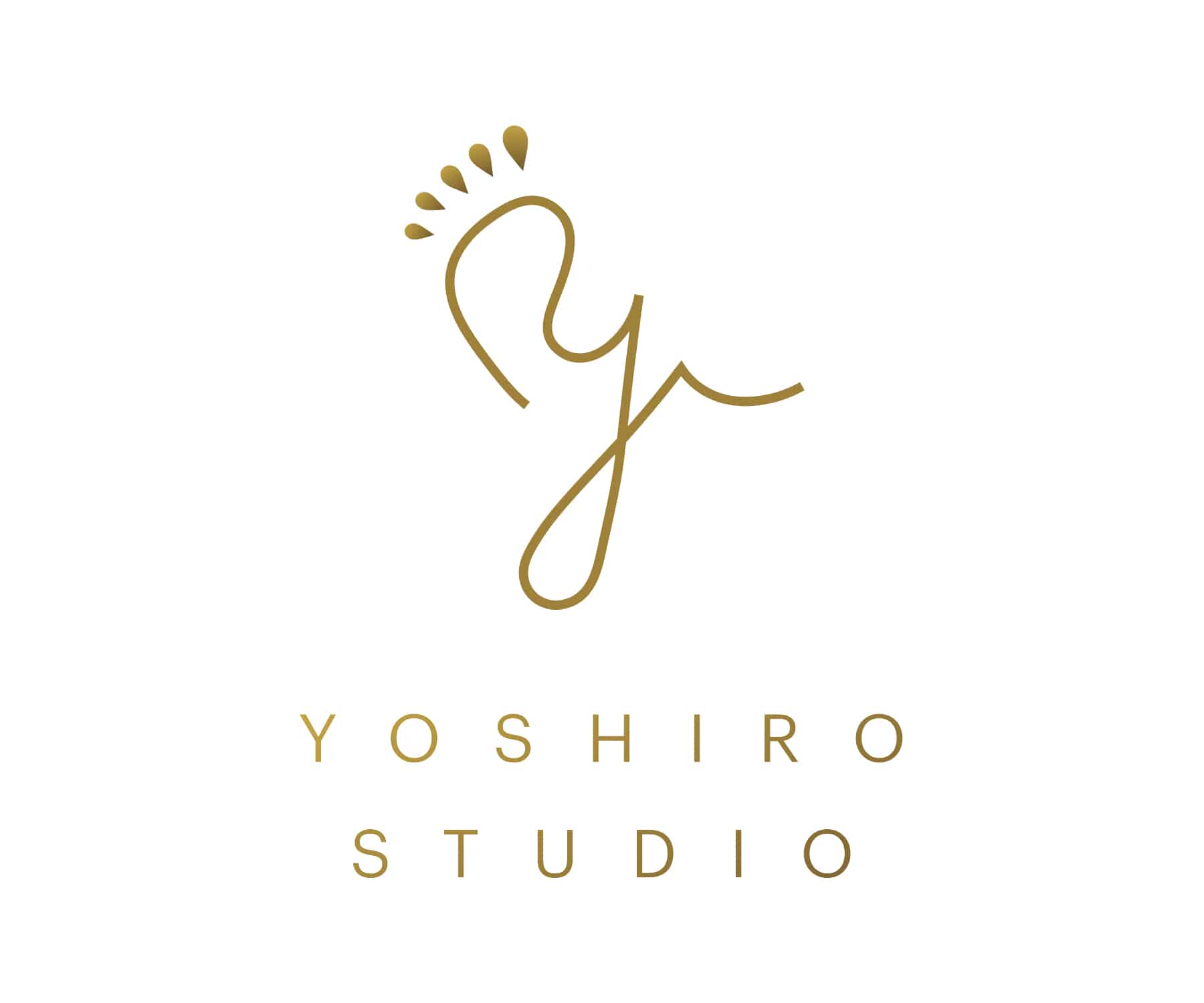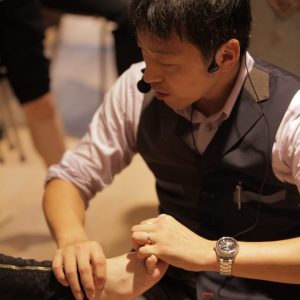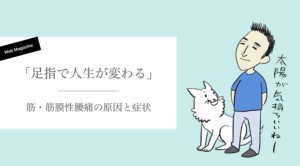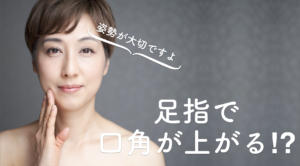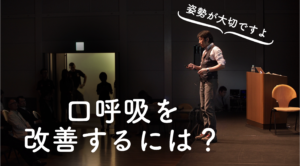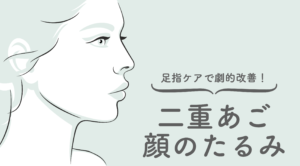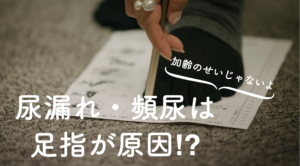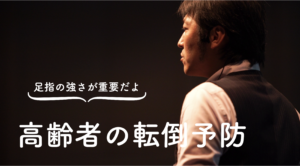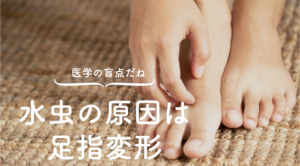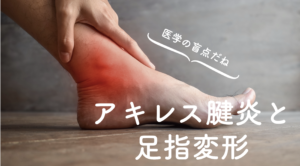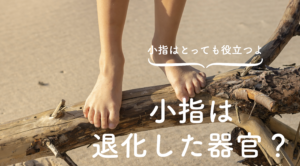Commentary by a toe doctor
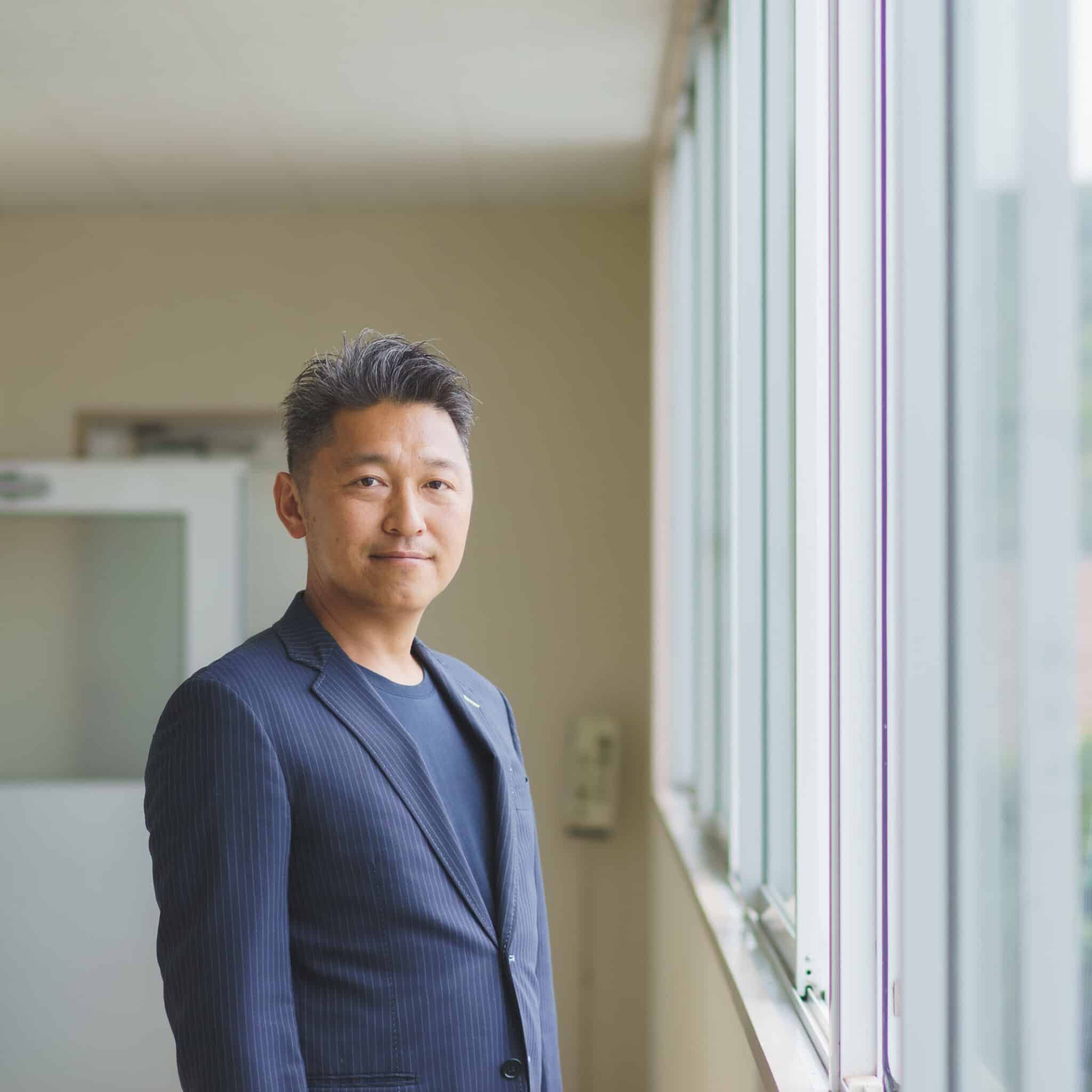
YOSHIRO YUASA
Keiro Yuasa
Dr. Toe, Director of Toe Research Institute, President of Japanese Society of Functional Foot and Toe Therapy, and developer of Halmek shoes. Former director, vice president, and medical director of General Hospital. He specializes in exercise physiology and anatomy. He is also a foot and shoe specialist and a leading expert in postural occlusion therapy. He has cured various orthopedic diseases (over 70,000 people) with toe therapy alone.
Introduction.
Many orthopedic surgeons say that back pain is caused by the fact that humans have come to walk with an upright posture, which puts more stress on the lower back...and as a result, back pain is caused. However, it is the same as saying, "We can't cure back pain. If you can't cure it, just say so, but it is also true that in many cases, orthopedic surgeons perform surgery, medicine, injections, and rehabilitation, and in many cases, things get worse in reverse. To cure back pain is not so difficult if we consider joint kinematics, physiology, anatomy, and ergonomics as a basis.
summary
Myofascial low back pain is caused by impaired blood flow
Myofascial back pain is a condition in which the muscles and fascia of the lower back become inflamed, causing pain and discomfort.This refers to the following. It is generally caused by working in the same position for long periods of time or maintaining an improper posture.
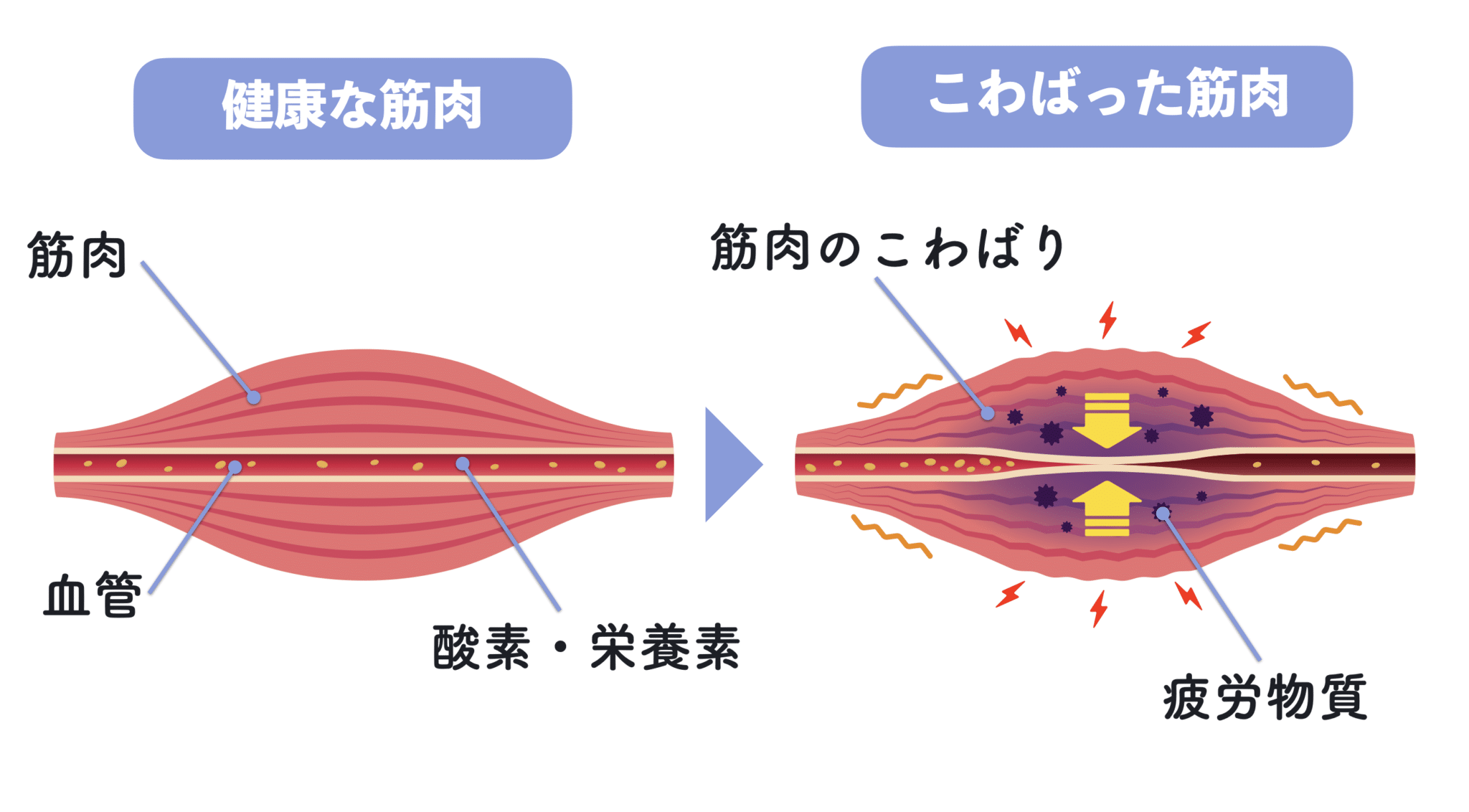
Myofascial low back pain is a type of low back pain that is believed to be caused by blood flow disorders.Myofascial back pain (excluding trauma) is caused by insufficient blood flow to the muscles and fasciaThe following is a list of the most common problems with the
When blood flow is insufficient, muscles and fascia are not properly supplied with oxygen and nutrients, resulting in inflammation and stiffness, which causes back pain. Myofascial back pain caused by impaired blood flow is often diagnosed as a herniated disc or spinal stenosis, because pain and numbness appear not only in the lower back but also in the legs. Symptoms include pain, stiffness, and difficulty moving in the lower back.
symptoms
Symptoms of myofascial low back pain include the following
1) Pain or tightness is felt in the lower back or buttocks.
(2) Aggravated by prolonged exposure to the same posture
(3) Pain worsens upon waking or movement.
4) Pain increases with strenuous exercise or physical activity.
(5) Waking up in pain during sleep
If these symptoms are present, it is important to seek appropriate toe treatment as soon as possible.
Causes and pathogenesis
Factors in the Development of Myofascial Low Back Pain
Common medical causes of myofascial low back pain include the following
(1) Imbalance in the body
(2) Muscle fatigue due to prolonged postural retention or repetition of the same movement
3) Insufficient exercise or damage and inflammation of muscles and membranes in the lumbar region
(4) Deformity or dislocation of the lumbar spine, herniation of the intervertebral disc
(5) Injury due to acute trauma or sports injury of the lower back
(6) Muscle tension due to excessive stress or mental strain
(7) Effects of underlying diseases such as osteoporosis, arthritis, and tumors
It is not well known that 1) is the cause of 2) through 5). This is called the "positional mechanism," which I will discuss in another article. Let's start by creating a good posture (neutral position).
Mechanical Mechanisms of Myofascial Low Back Pain
The neutral position is the basic posture for maintaining correct posture. This posture is one in which each part of the body is kept in the correct position and weight is evenly distributed.A state in which the burden on the body (joints, muscles, and ligaments) is minimized and the function of the whole body's motor and circulatory functions can be easily performed smoothly and in good balance.will be.
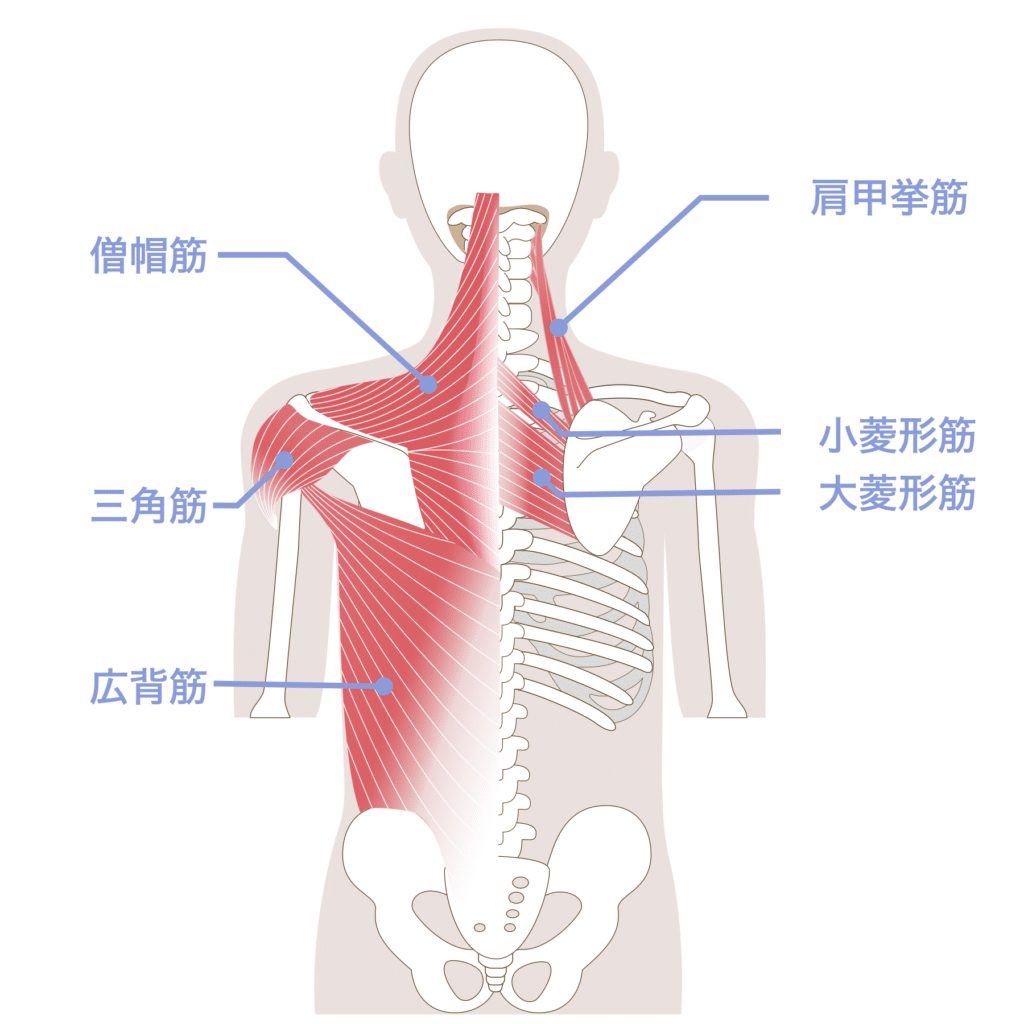

Therefore, when the posture is not in this neutral position, the strain on the muscles supporting the back increases, and the blood vessels in the back area are compressed, causing pain in the lower back due to "blood flow disorders. When blood vessels are compressed in the back part of the body, there is a lack of nutrition and oxygen in that area, causing pain and inflammation, resulting in "myofascial back pain.
Neutral position posture viewed from the side
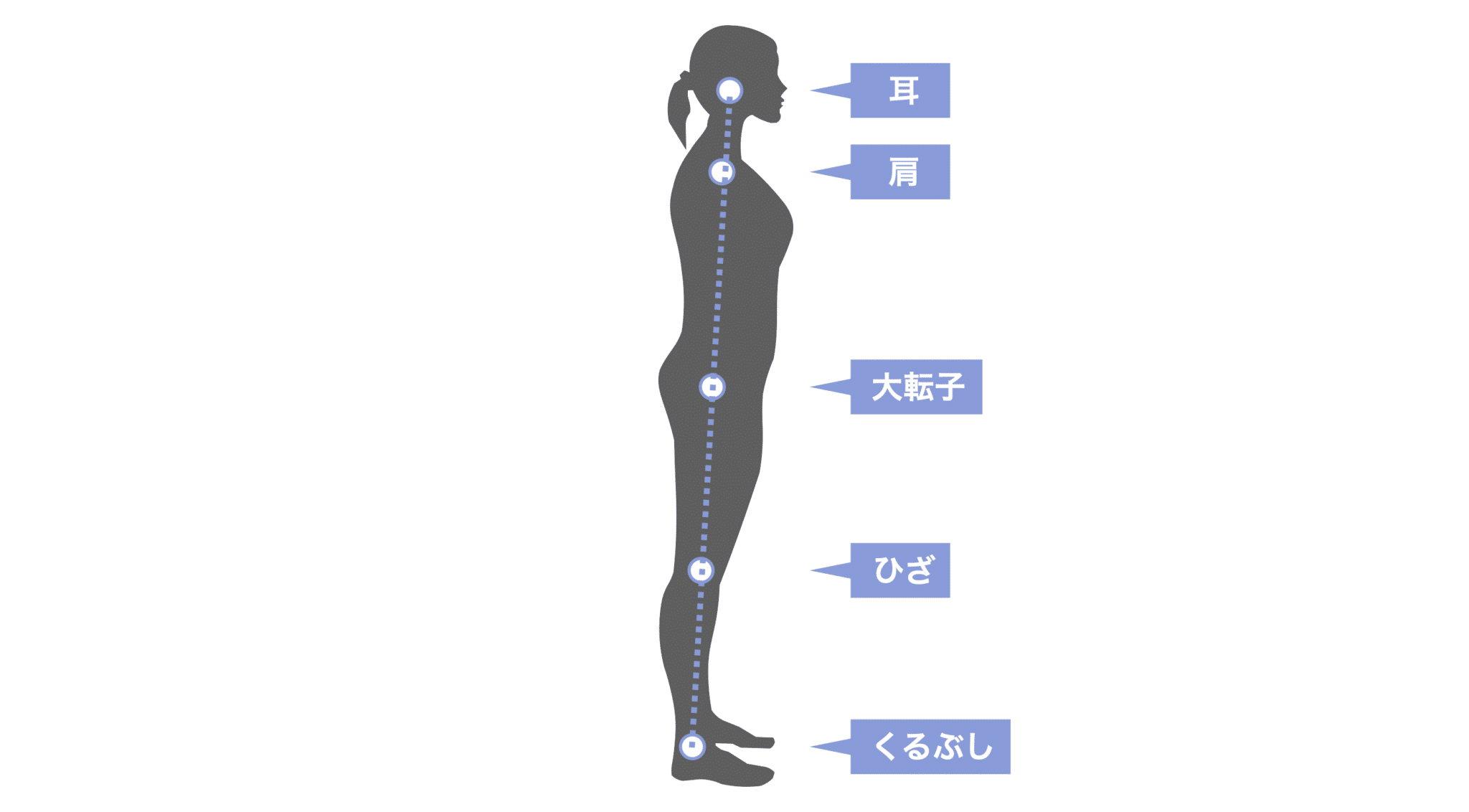
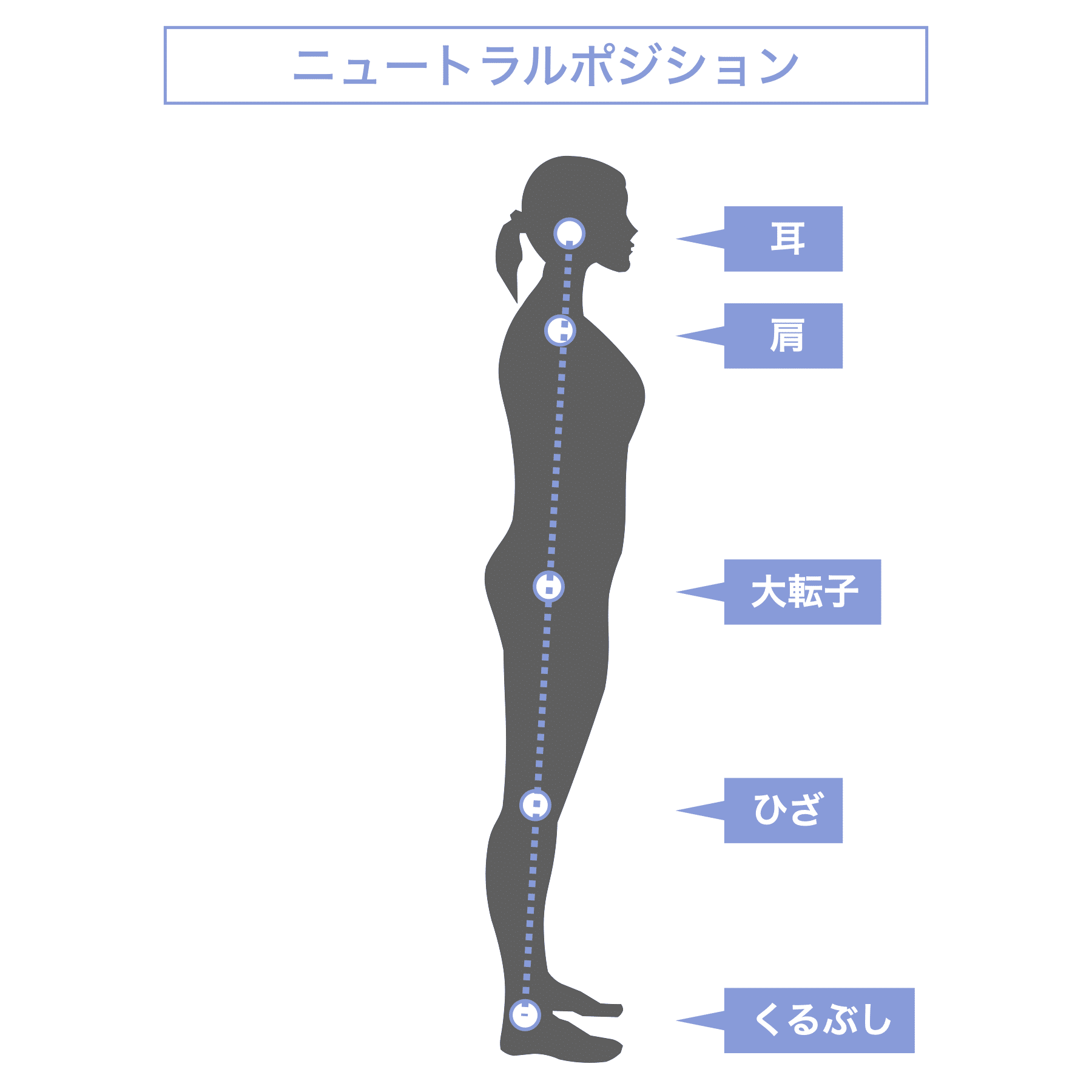
The "neutral position" is defined as the center of the shoulder (acromion), obliques (hip joints), and knees passing in a straight line connecting the earlobe and ankle.
Impaired blood flow and muscle inflammation due to warped back
The first mechanism is,(1) Type of shoes and how to wear them → (2) Toe deformity (clawed toe, floating toe) → (3) Backward center of gravity → (4) Pelvic forward tilt → (5) Warped back → (6) Excessive kyphosis of lumbar spine → (7) Stiff lumbar muscles (muscle compression) → (8) Blood flow disturbance → (9) Muscle inflammation → (10) Myofascial back painThis is the mechanism that
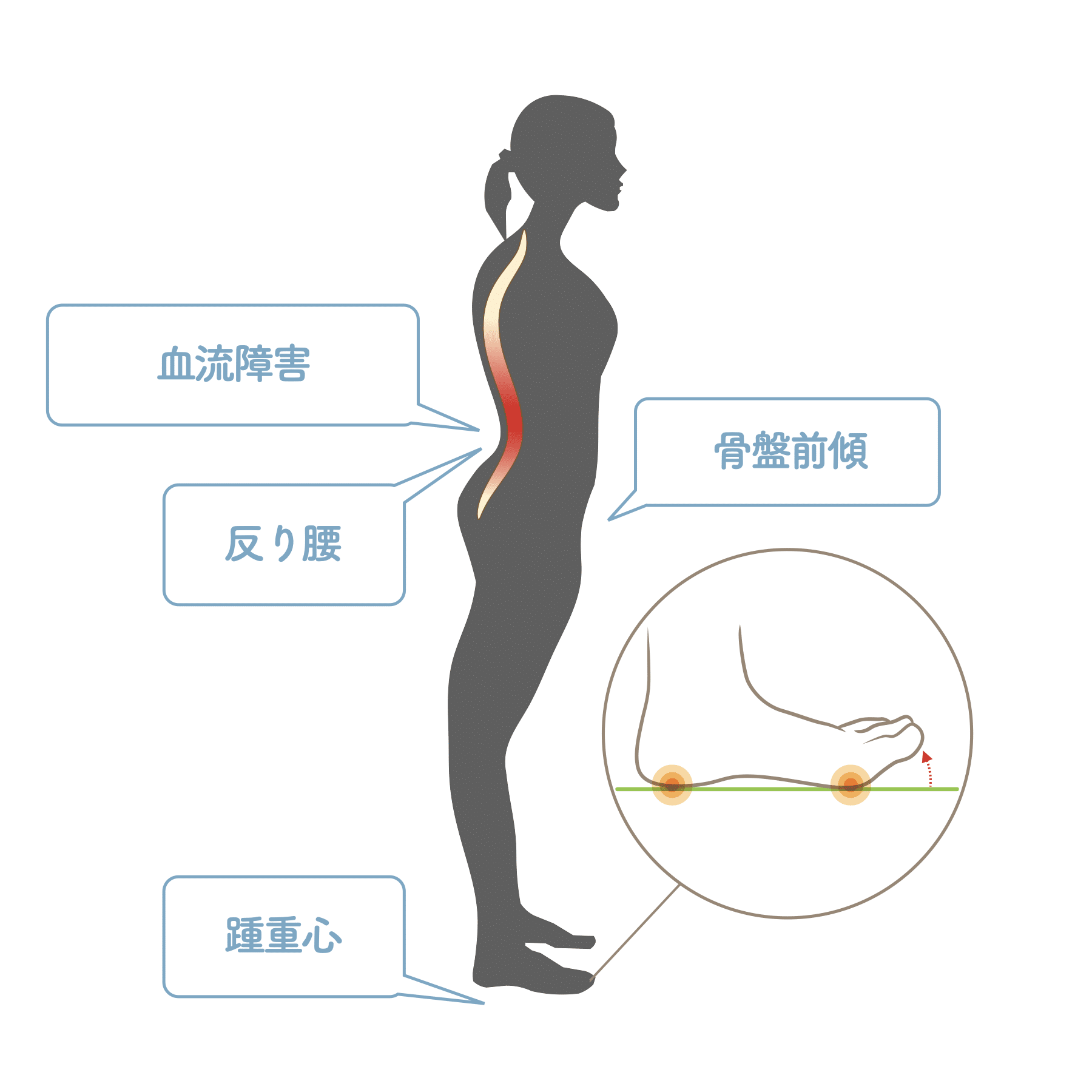
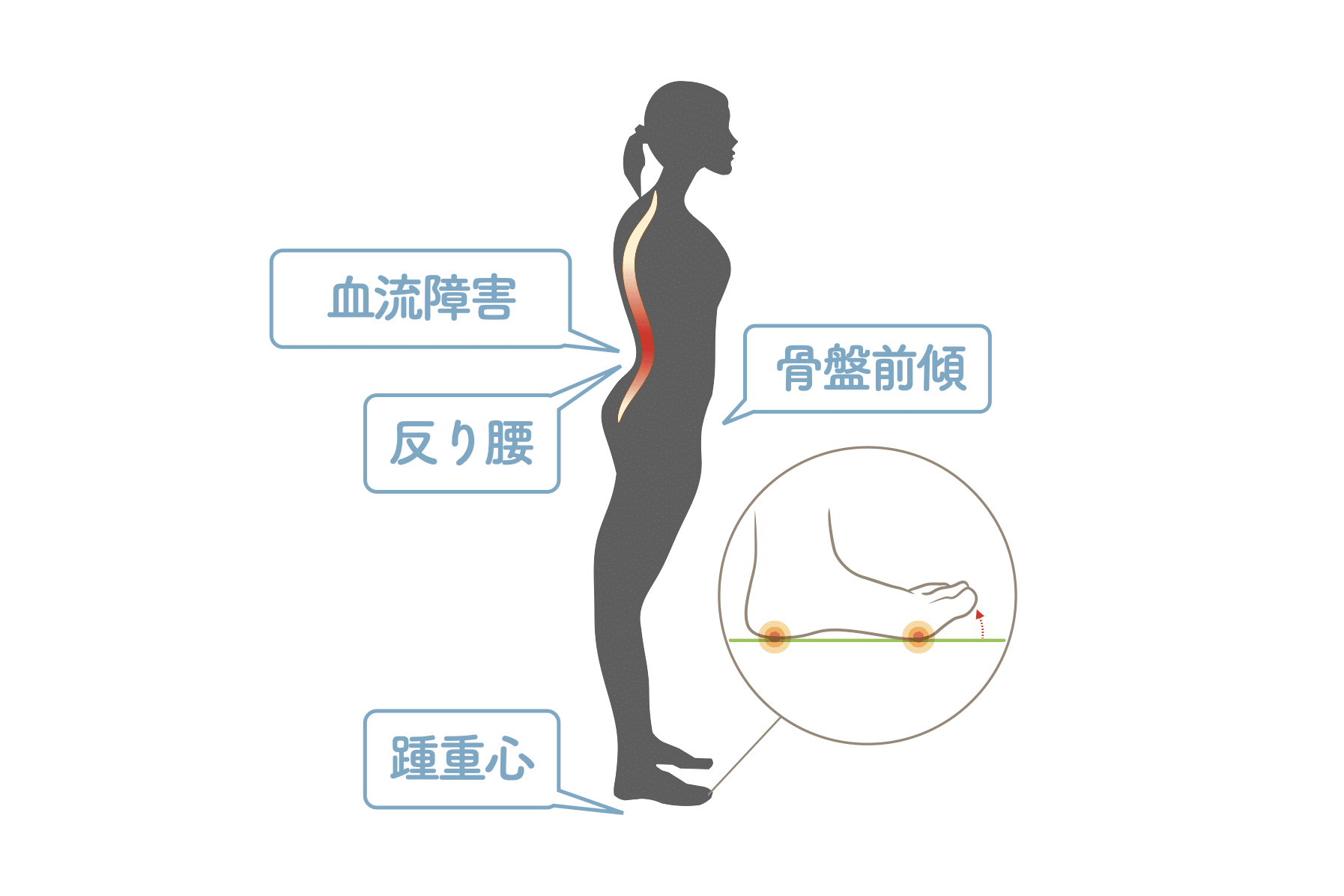
Impaired blood flow and muscle inflammation due to hunchback
The second mechanism is,(1) Type and way of wearing shoes → (2) Toe deformity (clawed toe, floating toe) → (3) Backward center of gravity → (4) Pelvic retroversion → (5) Hunchback → (6) Excessive kyphosis of thoracic spine → (7) Stiffness of muscles in thoracolumbar region (muscle compression) → (8) Blood flow disturbance → (9) Muscle inflammation → (10) Myofascial back painThis is the mechanism that
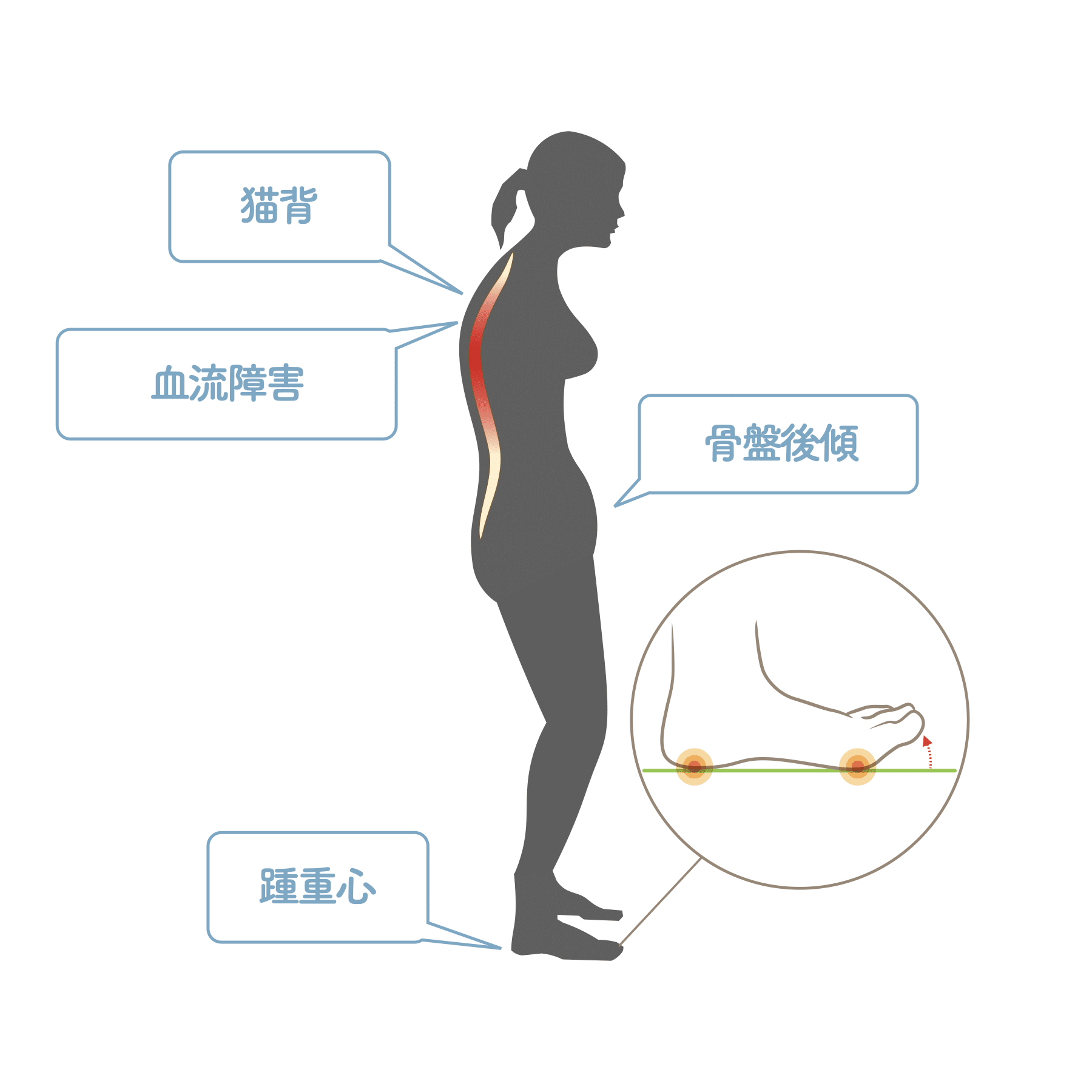
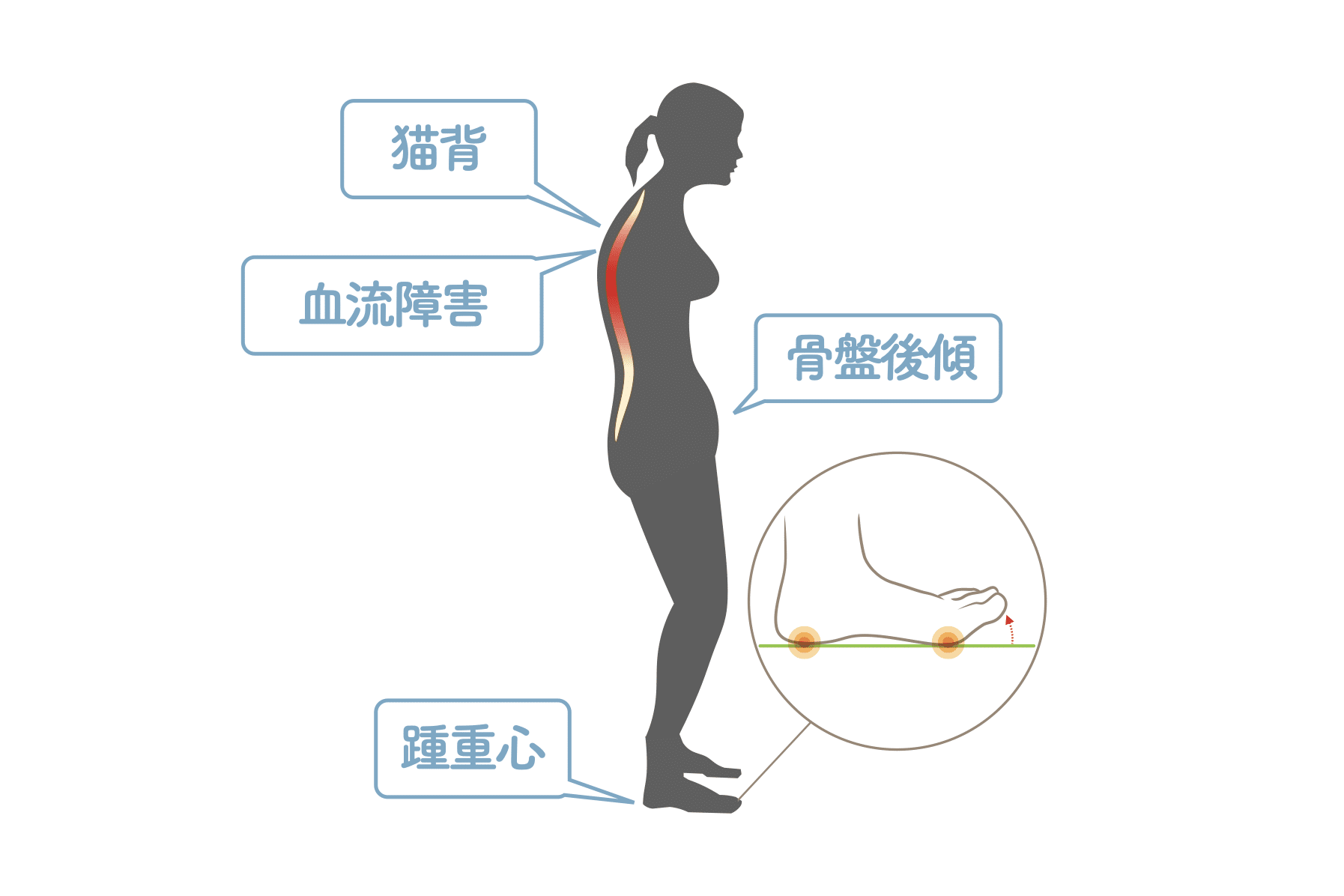
When the toes are bent or floating, the body weight is placed closer to the heel (heel center of gravity). The heel center of gravity causes the posture to fall backward, but the body tries to maintain balance by tilting the trunk forward or backward. This is called postural control.
This causes a warped or hunched back, and the loss of the physiological S-curve of the spine causes muscle fibers to stiffen. As a result, blood vessels are compressed, blood flow is reduced, muscles and fascia become inflamed, and pain occurs as back pain!
Neutral position posture viewed from the front
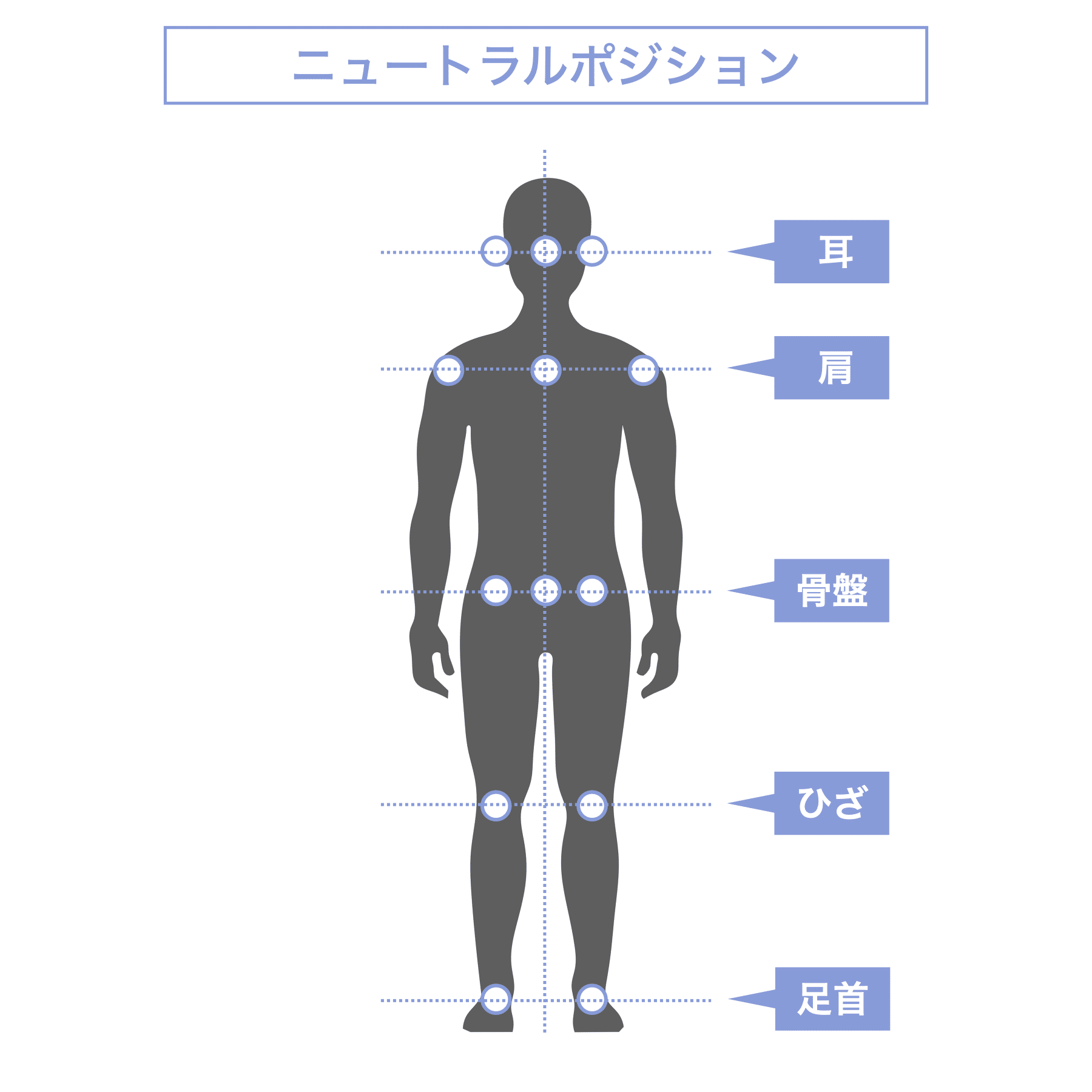
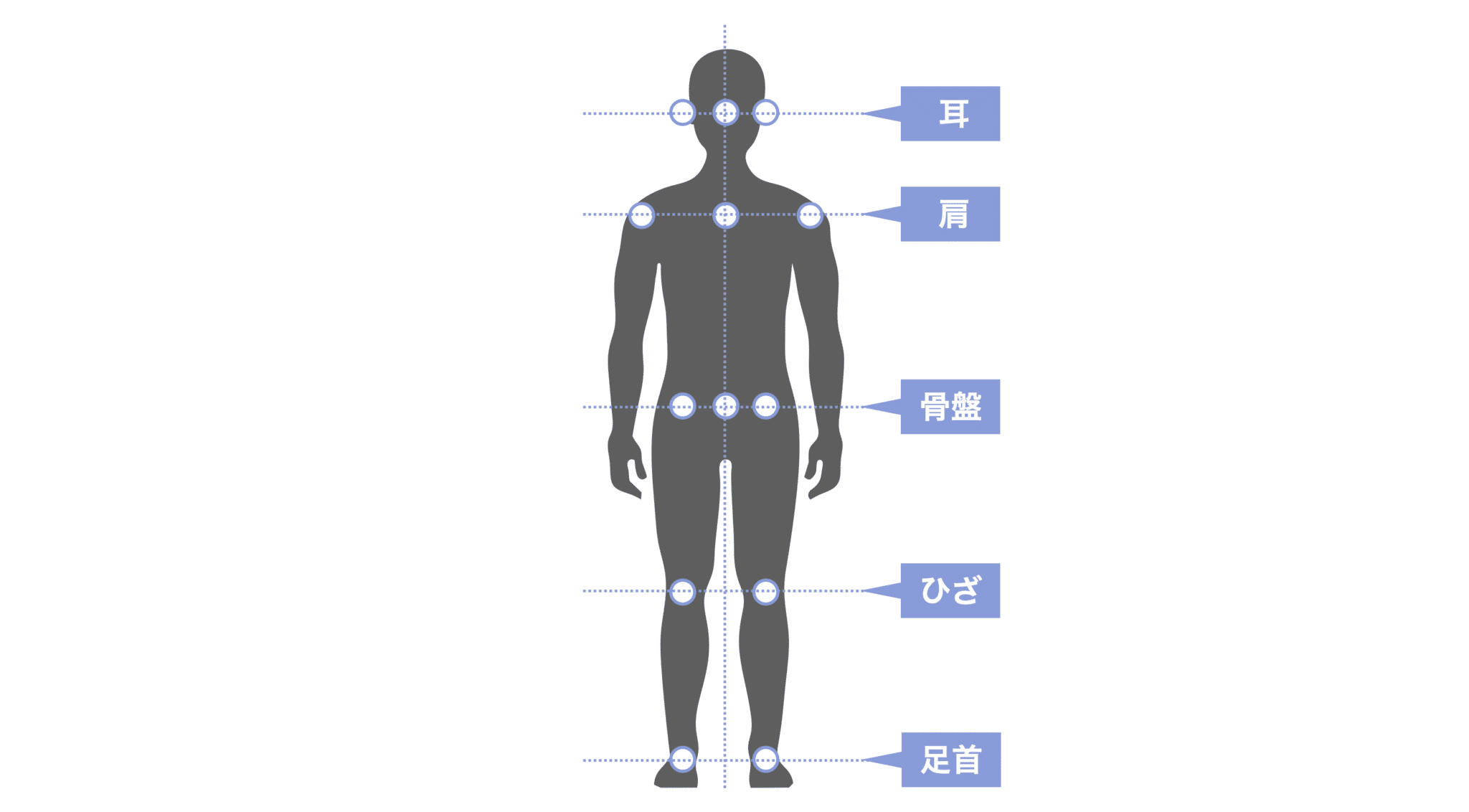
If the right and left ankles, knees, pelvis, shoulders, and ears are at the same height, we call it the "neutral position. Basically, the higher up you go, the greater the misalignment, so if the shoulder and ear heights are different on each side, the ankles, knees, and pelvis are distorted.
Impaired blood flow and muscle inflammation due to spine deformity (scoliosis)
The third mechanism is,(1) Type and way of wearing shoes → (2) Toe deformity (hallux valgus) → (3) Medial and lateral center of gravity → (4) X-legs and O-legs → (5) Left-right difference in leg length → (6) Pelvic distortion → (7) Spine deformation → (8) Muscle stiffness → (9) Blood flow disorder → (9) Muscle inflammation → (10) Myofascial back painThis is the mechanism that
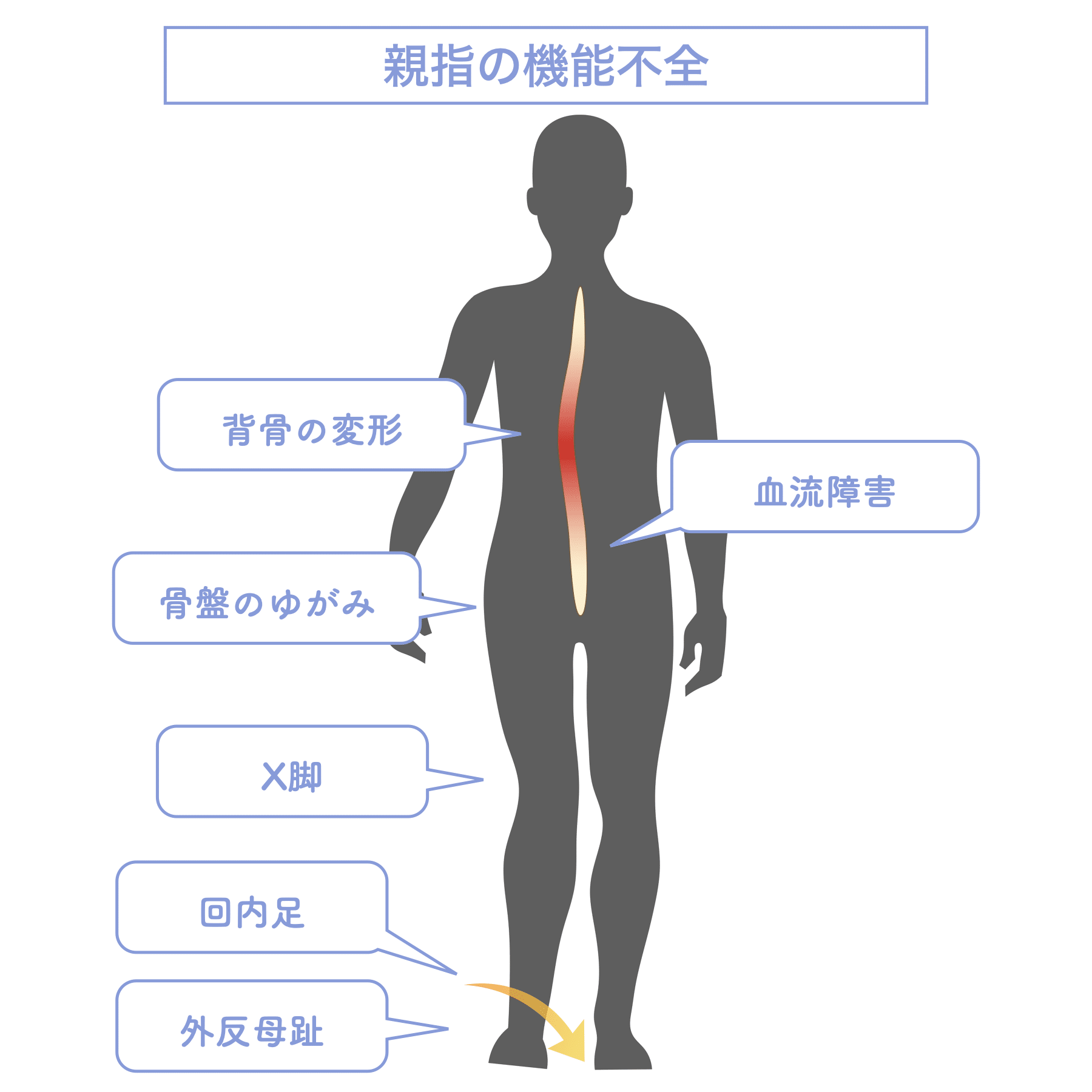
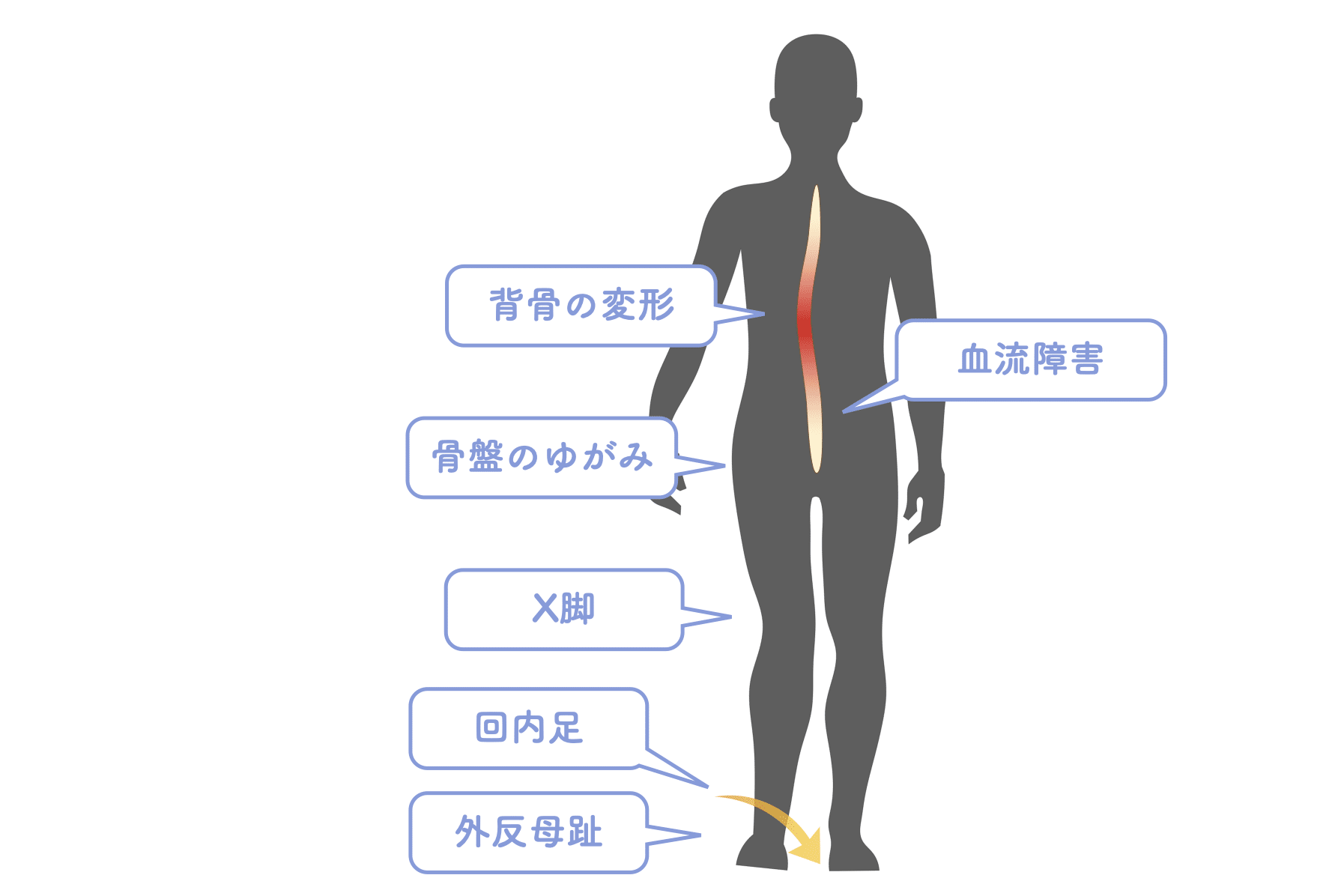
(1) When the thumb is dysfunctional (e.g., big toe), weight tends to be placed on the inside of the foot. This is also called "turning inward leg," and when this happens, the knee falls inward to form an X leg, and the pelvis collapses toward the short leg. In this case, the spine on top of the pelvis tries to return the center of gravity to the center while drawing an S-shaped curve to maintain balance (postural control mechanism).
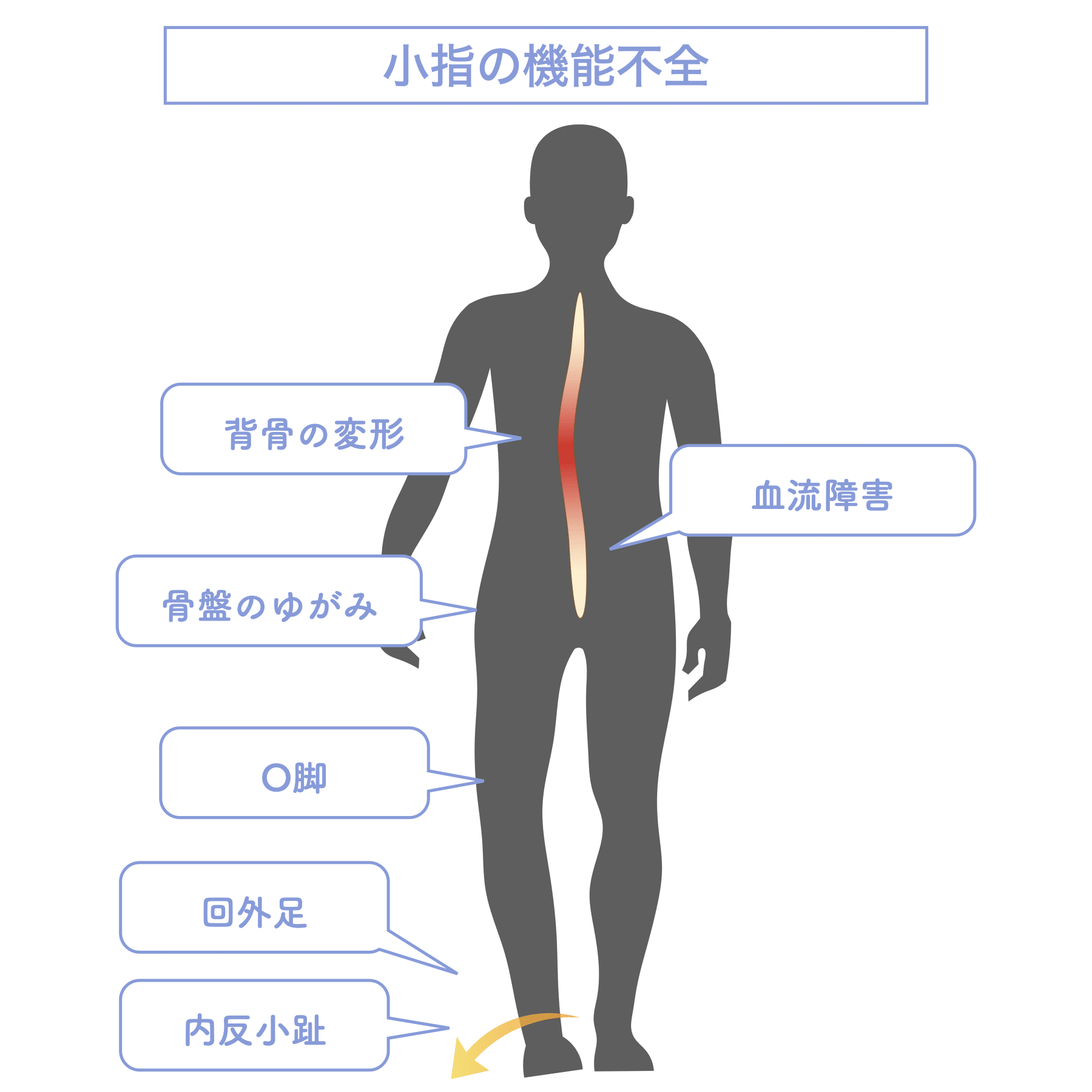
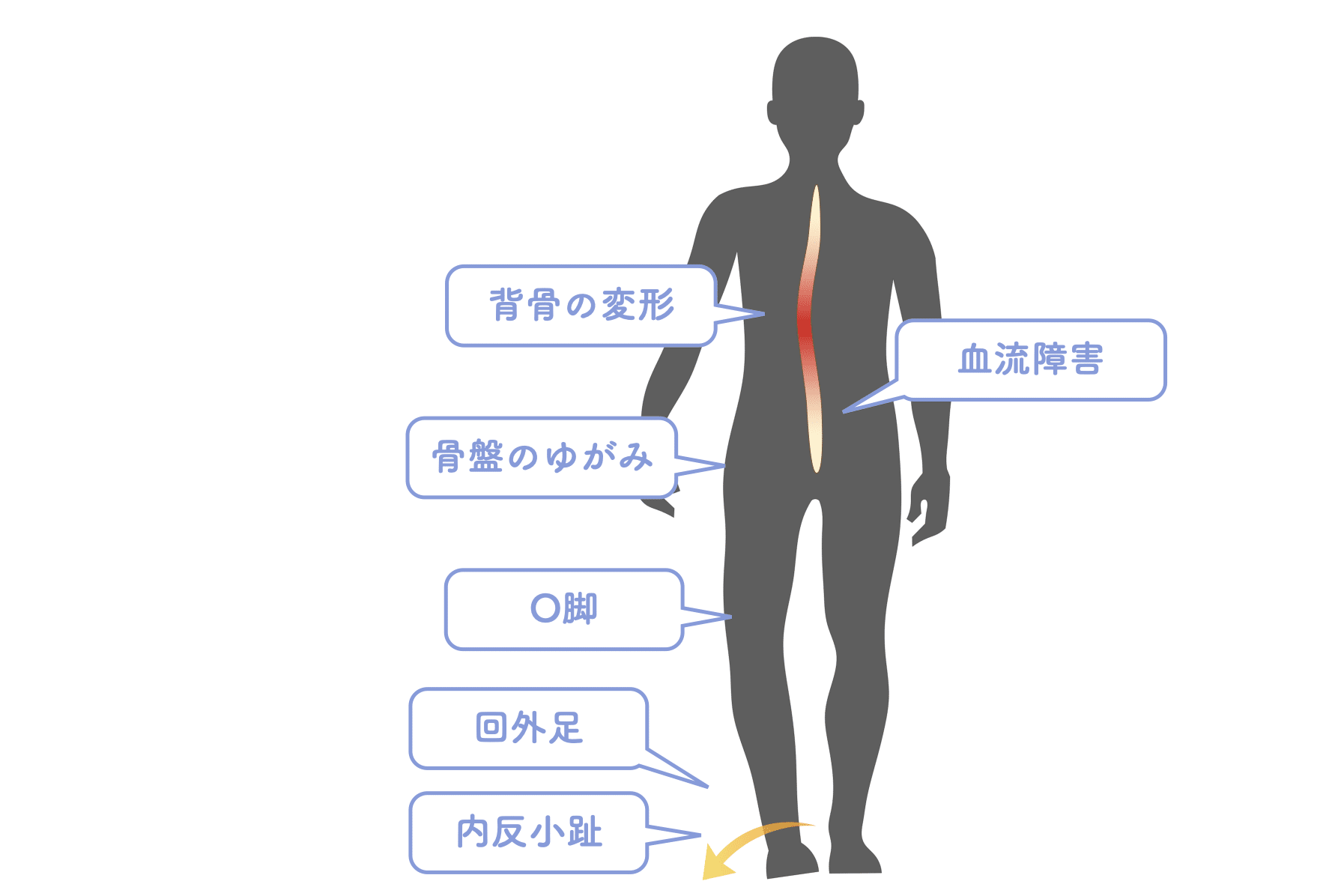
(2) When the little toe is dysfunctional (e.g., hallux valgus), weight tends to be placed on the outside. This is also called "outward rotation of the foot," in which the knee falls outward to form an O-leg, and the pelvis collapses toward the short leg. In this case, the spine on top of the pelvis tries to bring the center of gravity back to the center while drawing an S-shaped curve to maintain balance (postural control mechanism).
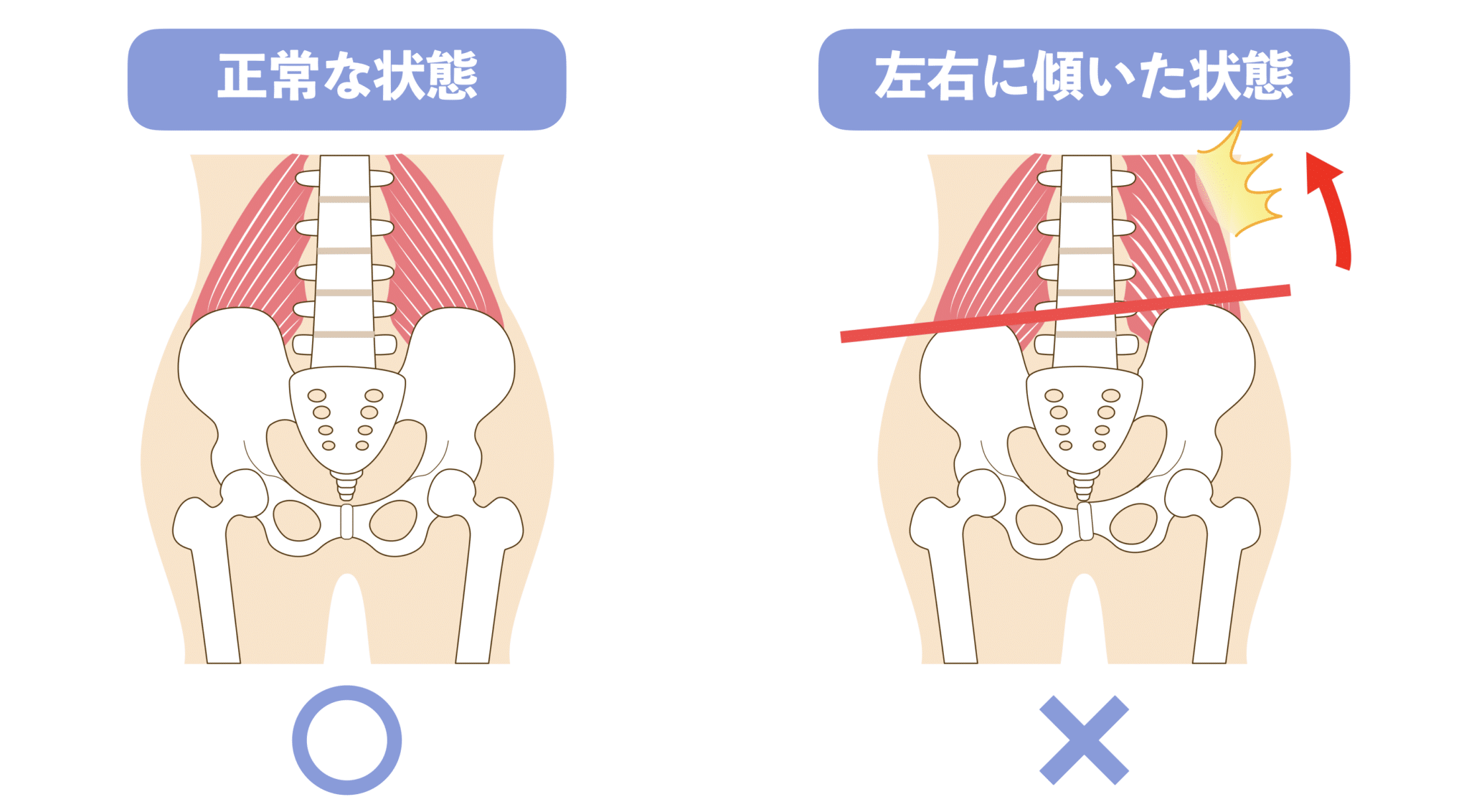
When there is a left-right difference in pelvic height, the spine becomes S-curved and the fibers of the lower back muscles stiffen. As a result, blood vessels are compressed, blood flow is reduced, muscles and fascia become inflamed, and pain occurs as lower back pain. The lower back of the person with the elevated pelvis is more likely to be injured (left lower back pain if the right leg is shorter).
Let's look at this in a little more detail.
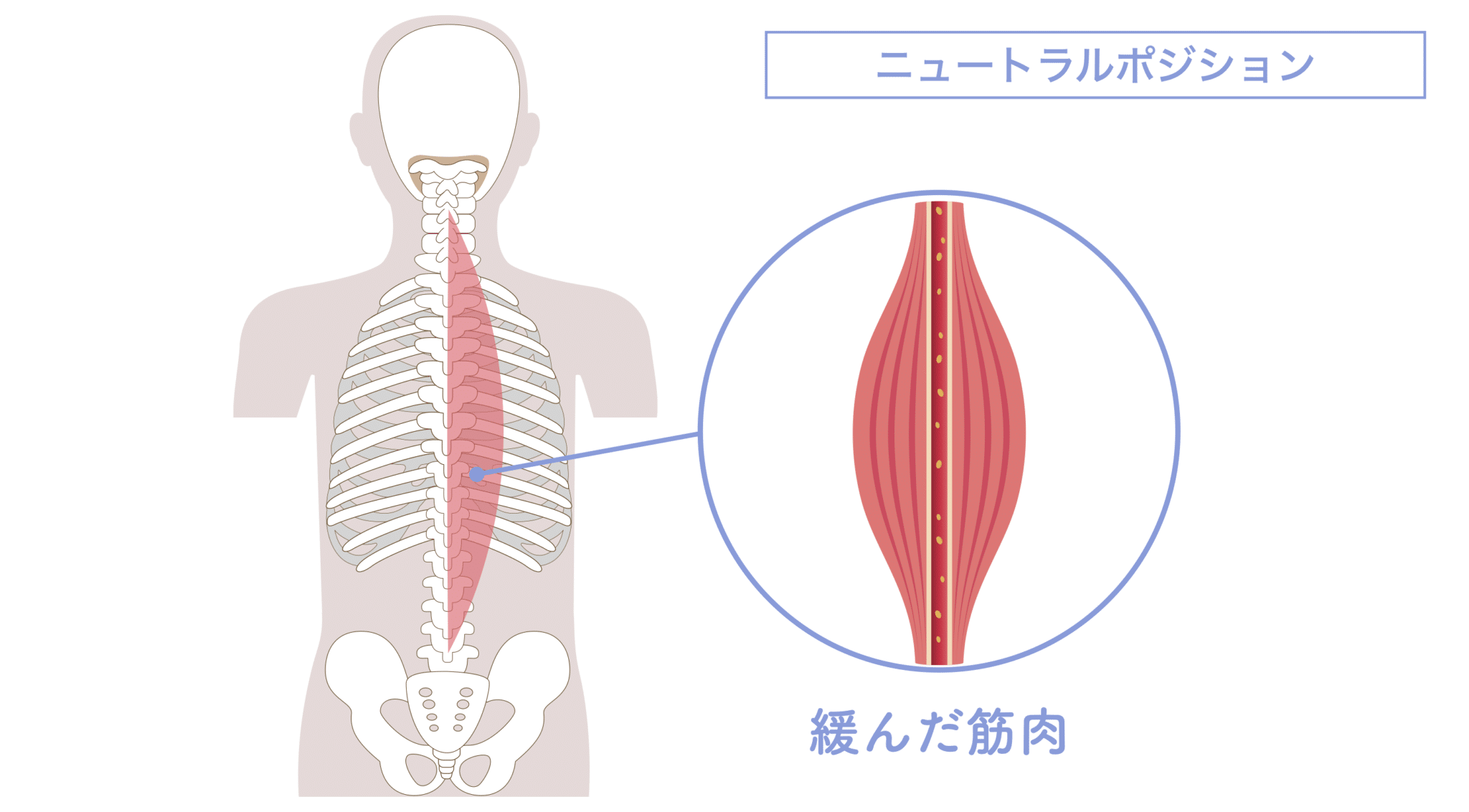
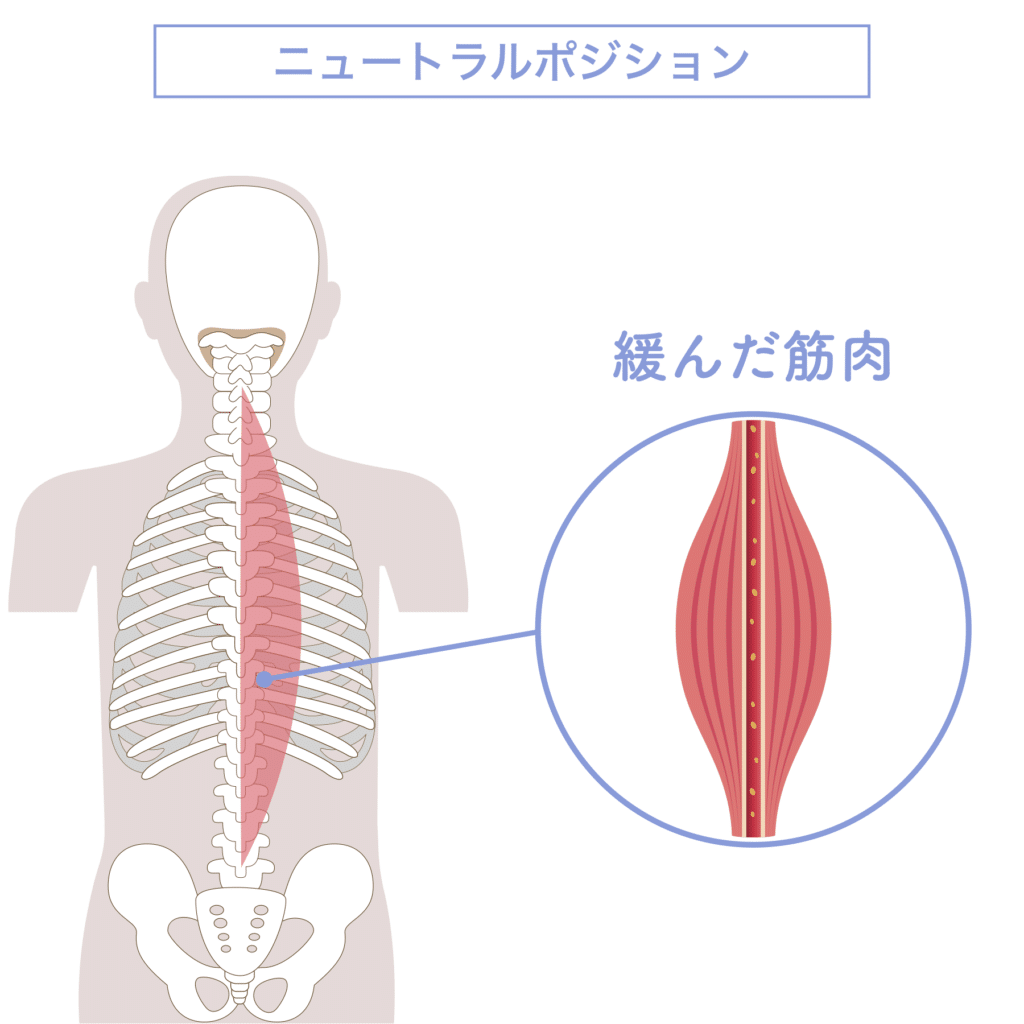
In the neutral position posture, each body part is kept in its correct position and muscles are relaxed. The blood vessels in the muscles are alsoThe circulatory function remains in good working condition.
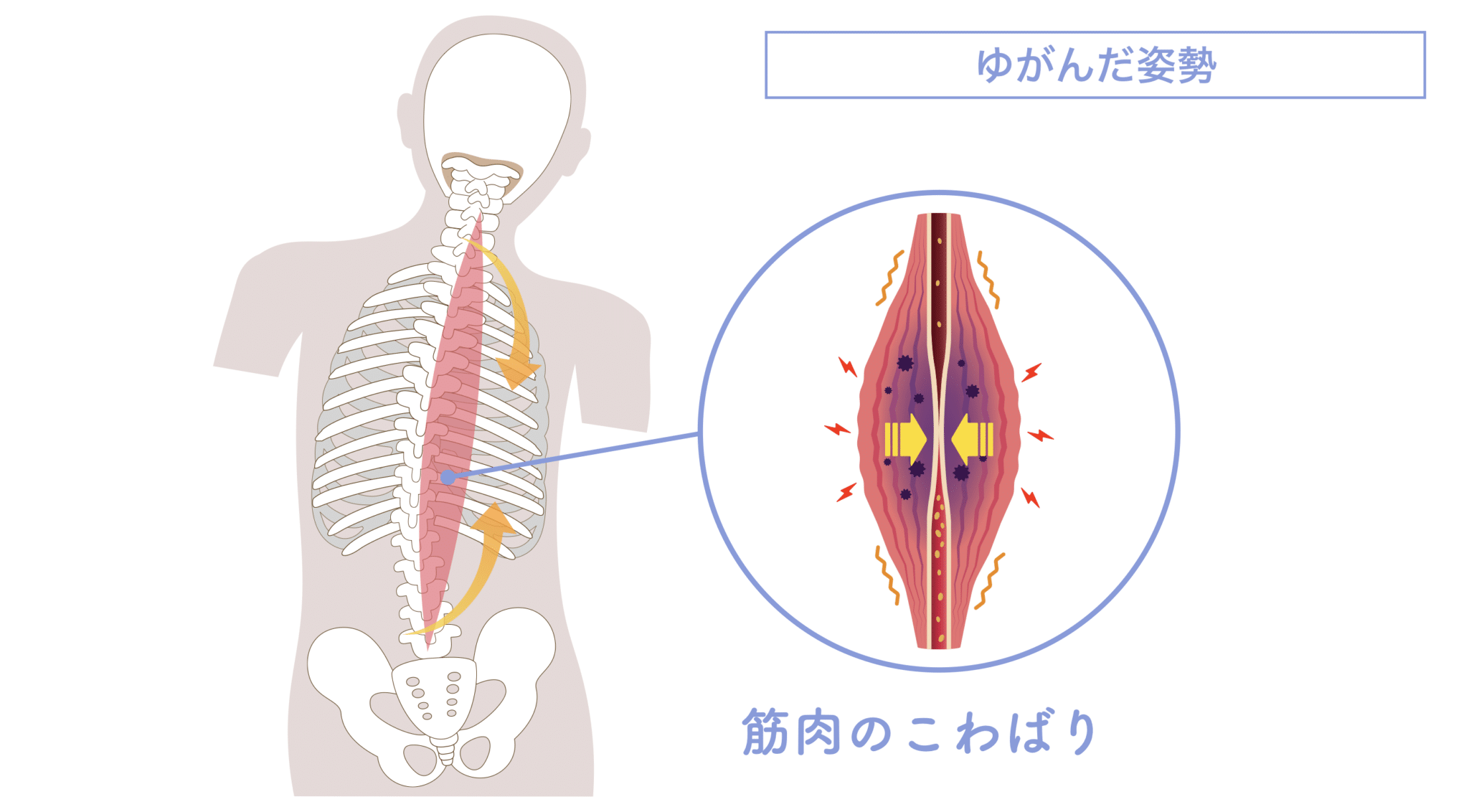
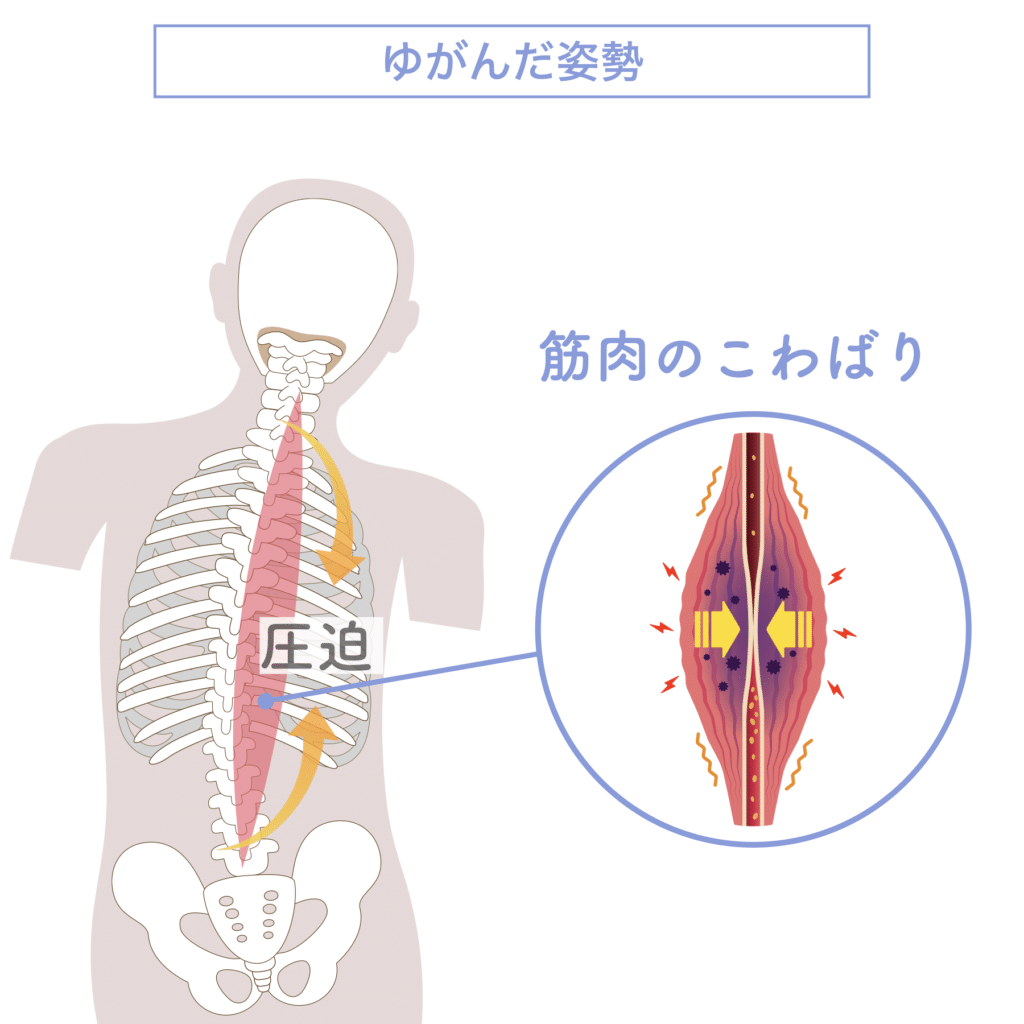
However, in a distorted posture, each part of the body is kept in the wrong position and the muscles are stiff. The blood vessels in the muscles are also compressed.The circulatory function becomes poorly functioning.Muscles and fascia are prone to inflammation.
If the cause of back pain is due to impaired blood flow, it is important to treat the root cause, the toes, thereby eliminating distortion of the entire body and improving blood circulation. This is why muscle training, stretching, and posture instruction do not improve back pain.
Inspection and Self-Check
Myofascial back pain is a condition that causes pain in the muscles and fascia of the lower back. Below is a self-examination procedure.
1) Be aware of where your back pain is coming from. See if you feel pain or tension, especially in the muscles around your lower back, buttocks, or thighs.
2) Check for stiffness and tension in the muscles around the lower back. Try massaging and stretching to feel the degree of stiffness and pain.
3) Check to see if your back pain is aggravated by certain movements or postures. In particular, note if your back pain becomes worse when you stay in the same position for long periods of time, or if the pain increases with certain movements.
(4) Check to see if there are any activities in daily life or exercise that put strain on the lower back. For example, if you have poor posture when lifting heavy objects or often stay in the same position for long periods of time, this may be the cause of your back pain.
Self-check of posture (1)
First, take a picture of your posture from right beside yourself with your phone or other device. Take the picture so that the center point of the phone is at the center of your body. It is a good idea to make sure that the leveler is positioned at your navel.
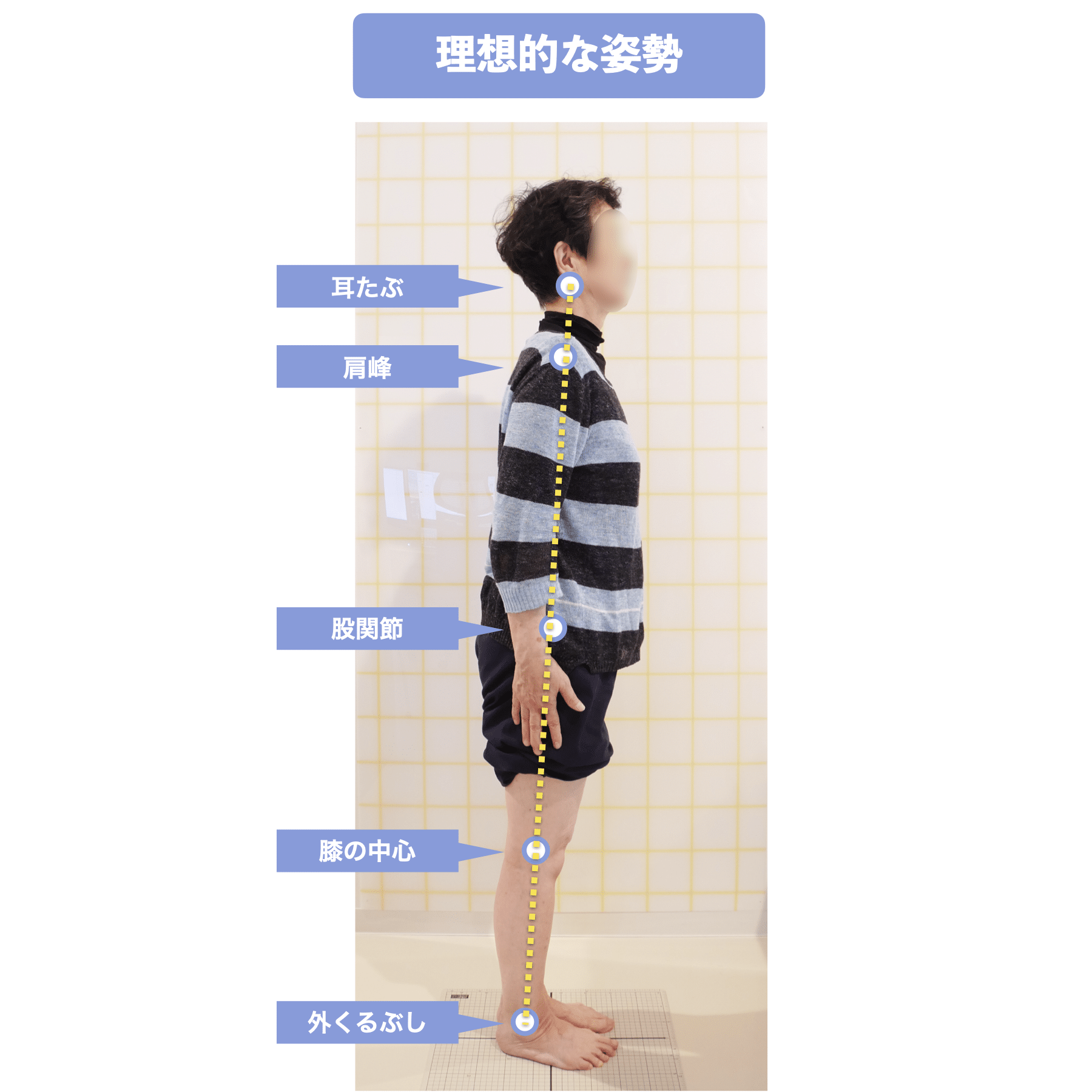
Next, connect the earlobes (earlobes) to the outer ankles of the feet with a line. In that straight line,(1) center of the knee, (2) greater trochanter (hip joint), (3) acromion (center of the shoulder)The ideal posture is when the line is aligned with the outer ankle. If it is not convenient to draw a line, use a ruler or similar tool to align the earlobe with the outer ankle.
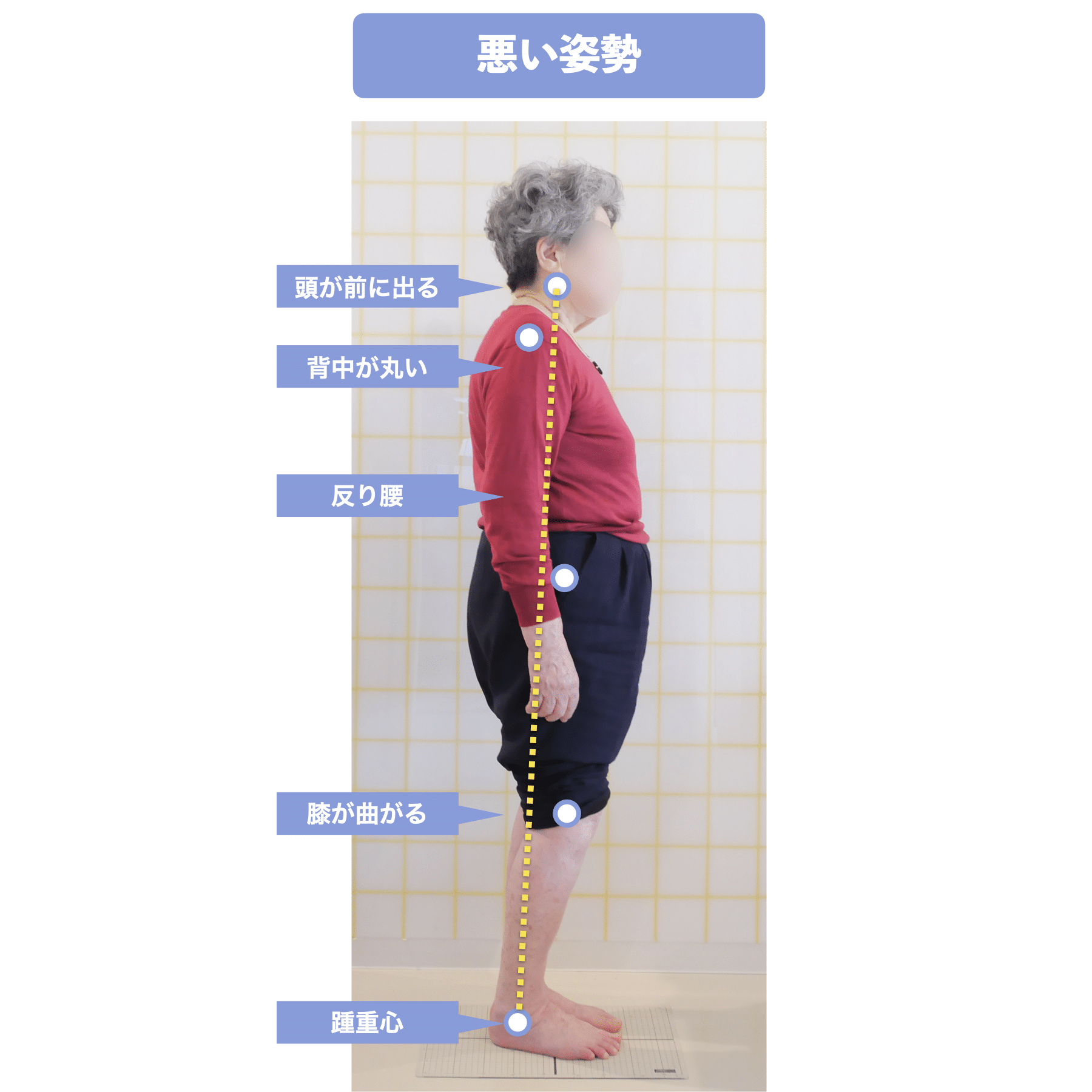
If either (1), (2) or (3) deviates from a straight line, hunchback or warped backand standing with the neck forward (except for some people with warped hips). How did you feel? I think most of you had a hunchback or warped back.
Self-check of posture (2)
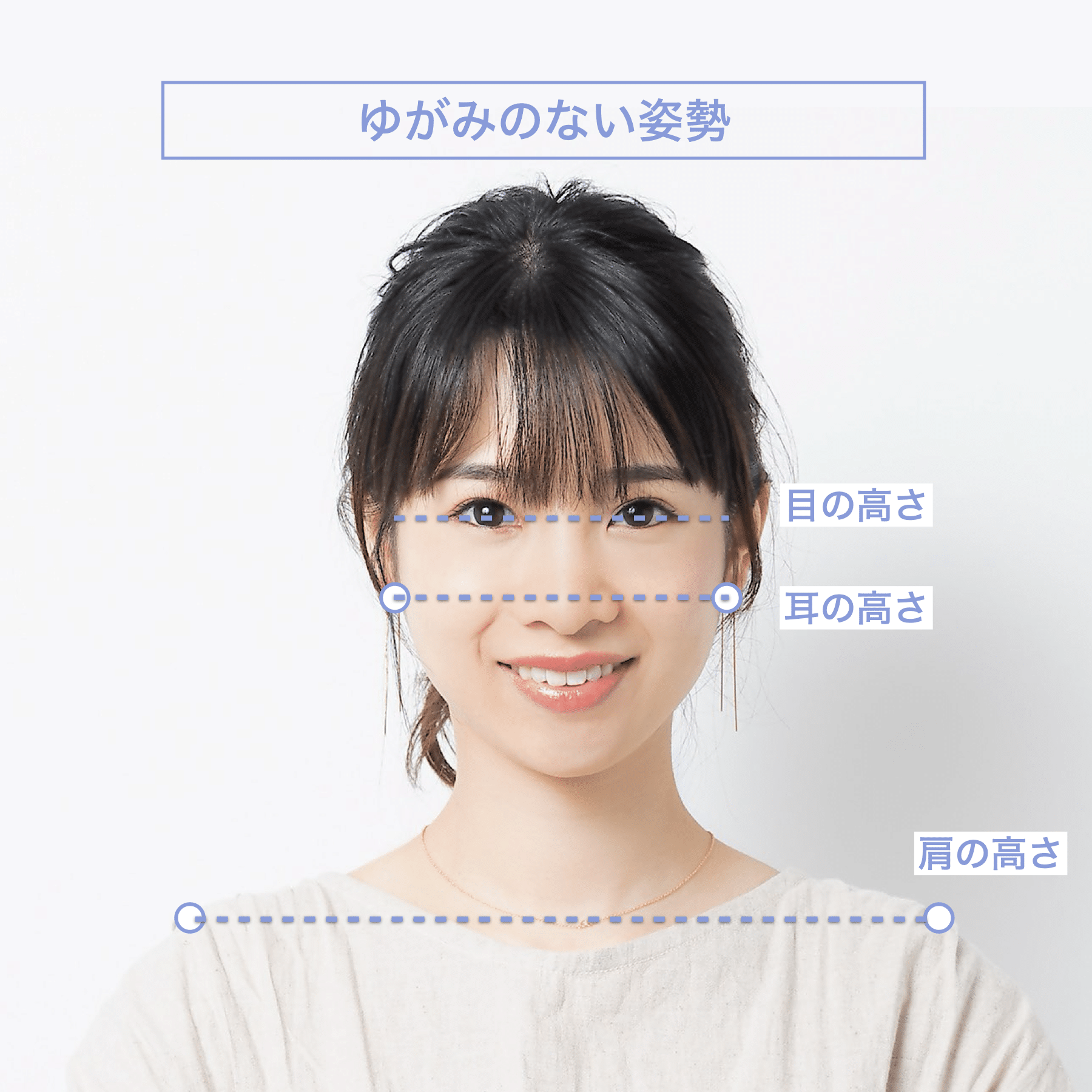
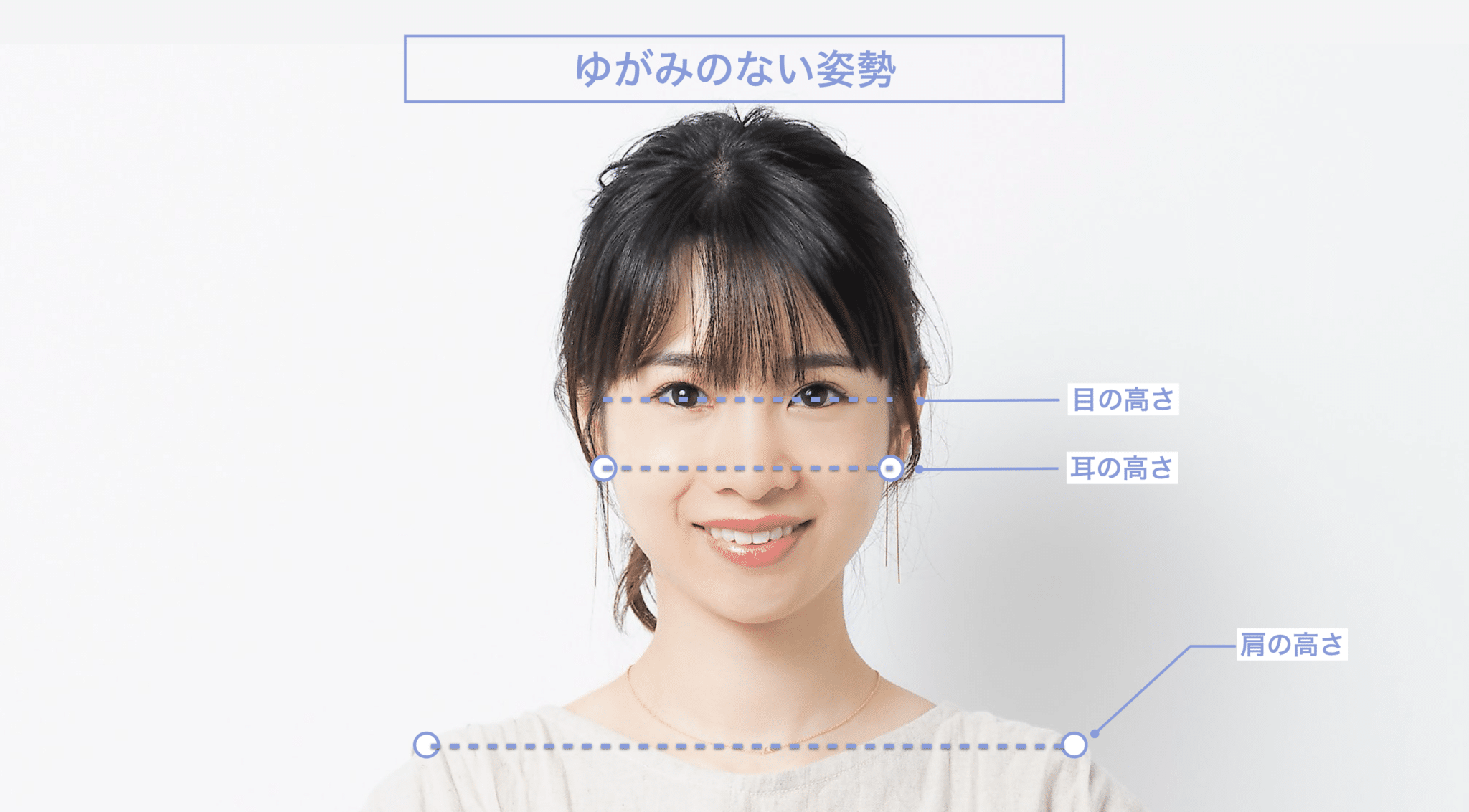
Next, check your body directly in front of you in the mirror. Stand up straight with both feet together. At that time,Eye (eye socket), ear (earlobe), shoulder heightis the same on both sides.
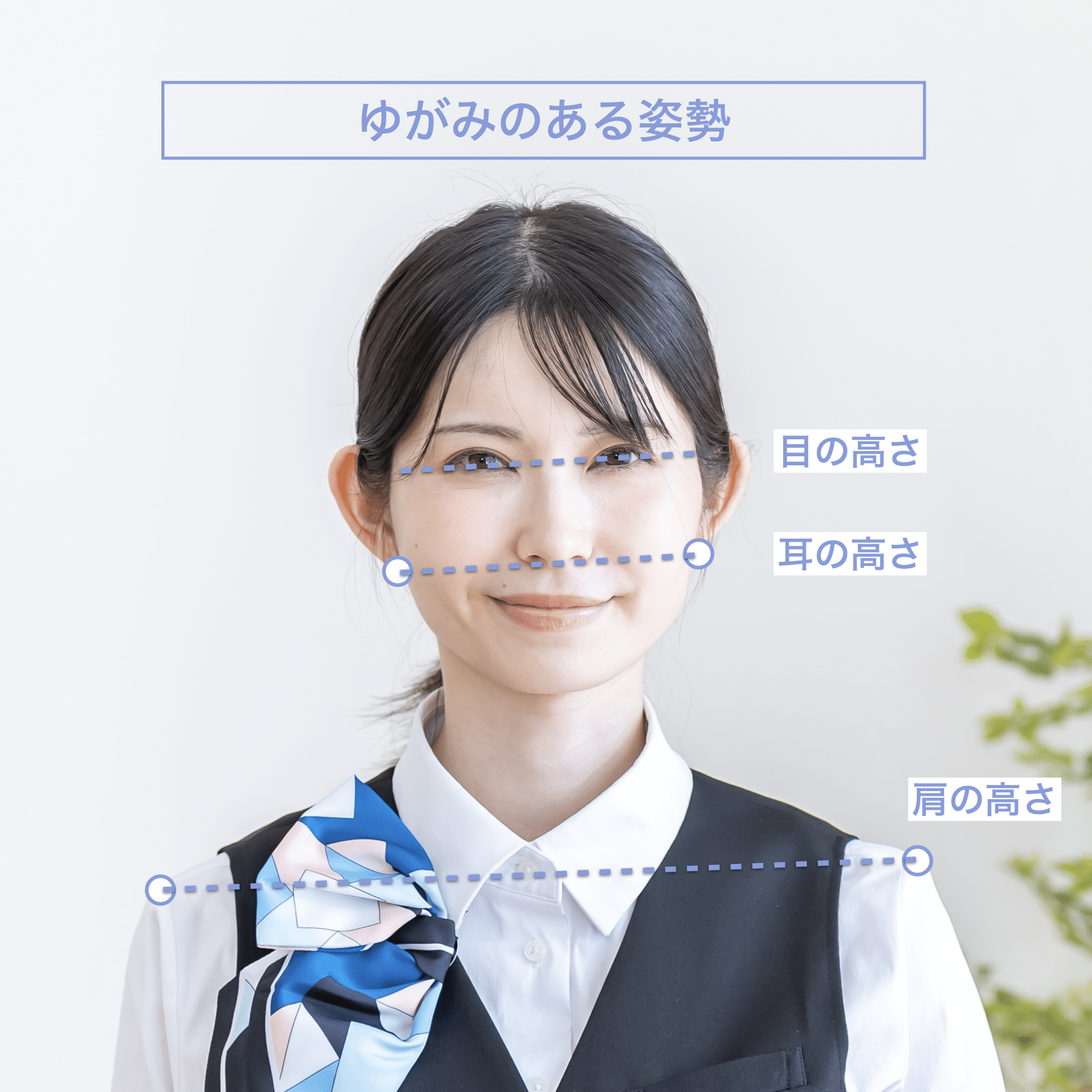
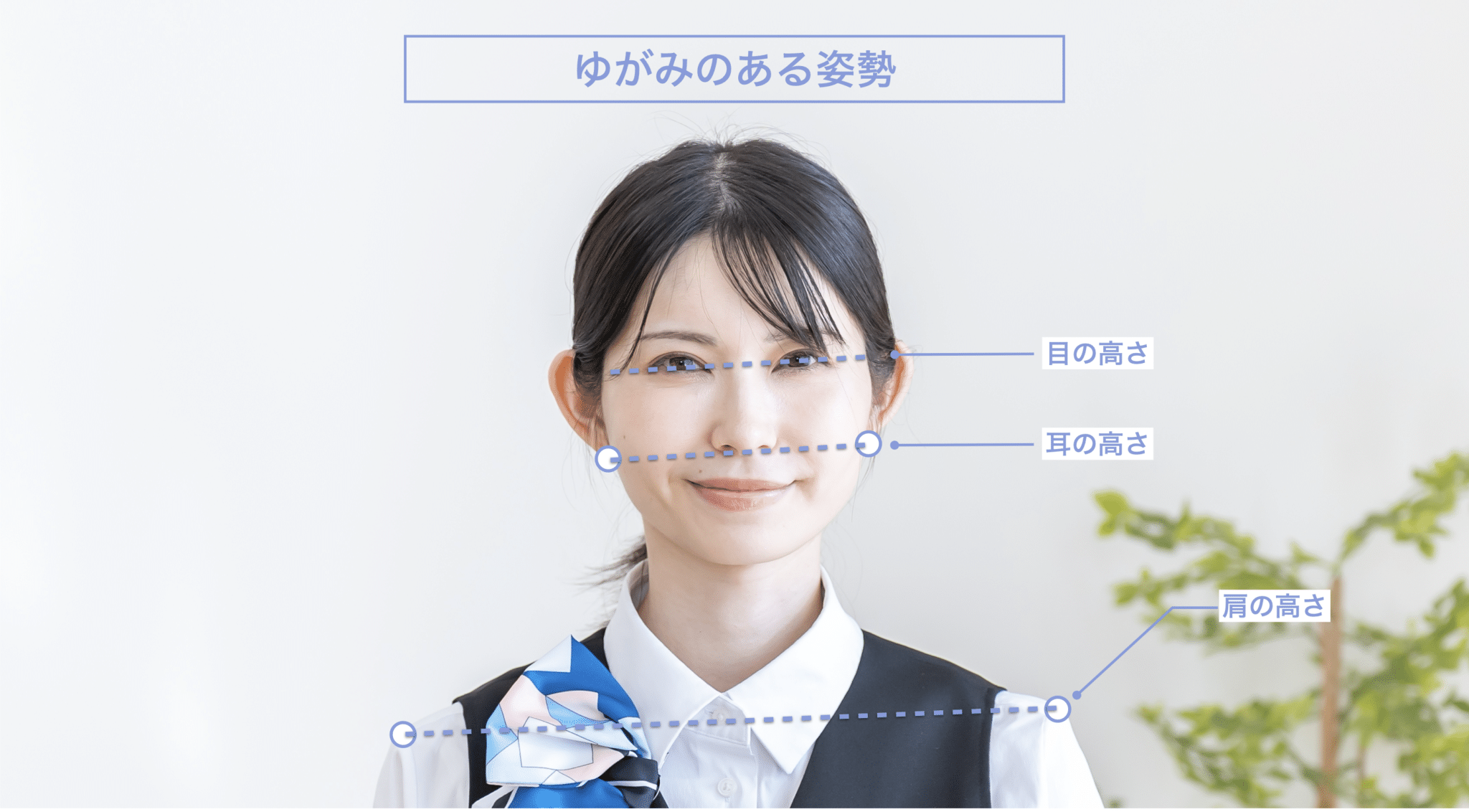
If the height is different on the left and right, the spine, pelvis, and leg lengths are different.This will be the case. How did you feel? Most of you probably had different heights on the left and right sides.
Toe deformity check
Most people today have deformed toes due to the wrong choice of shoes and socks, and the way they wear them.and the foundation is collapsing. Please refer to the following website for more information.
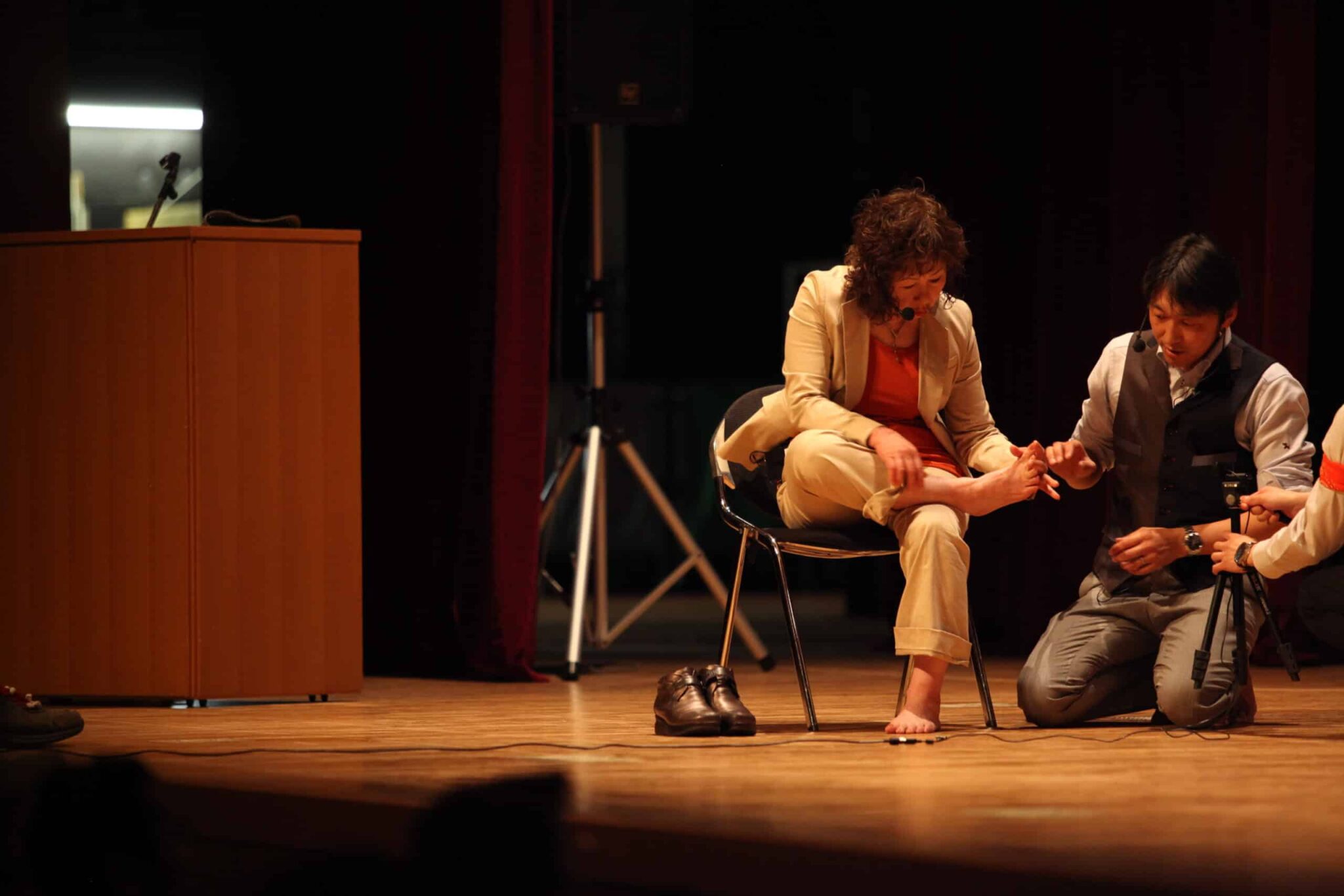
A simple check sheet is also available to check the deformity of the thumb and little toe. Please download it and check it by putting your own foot on it.

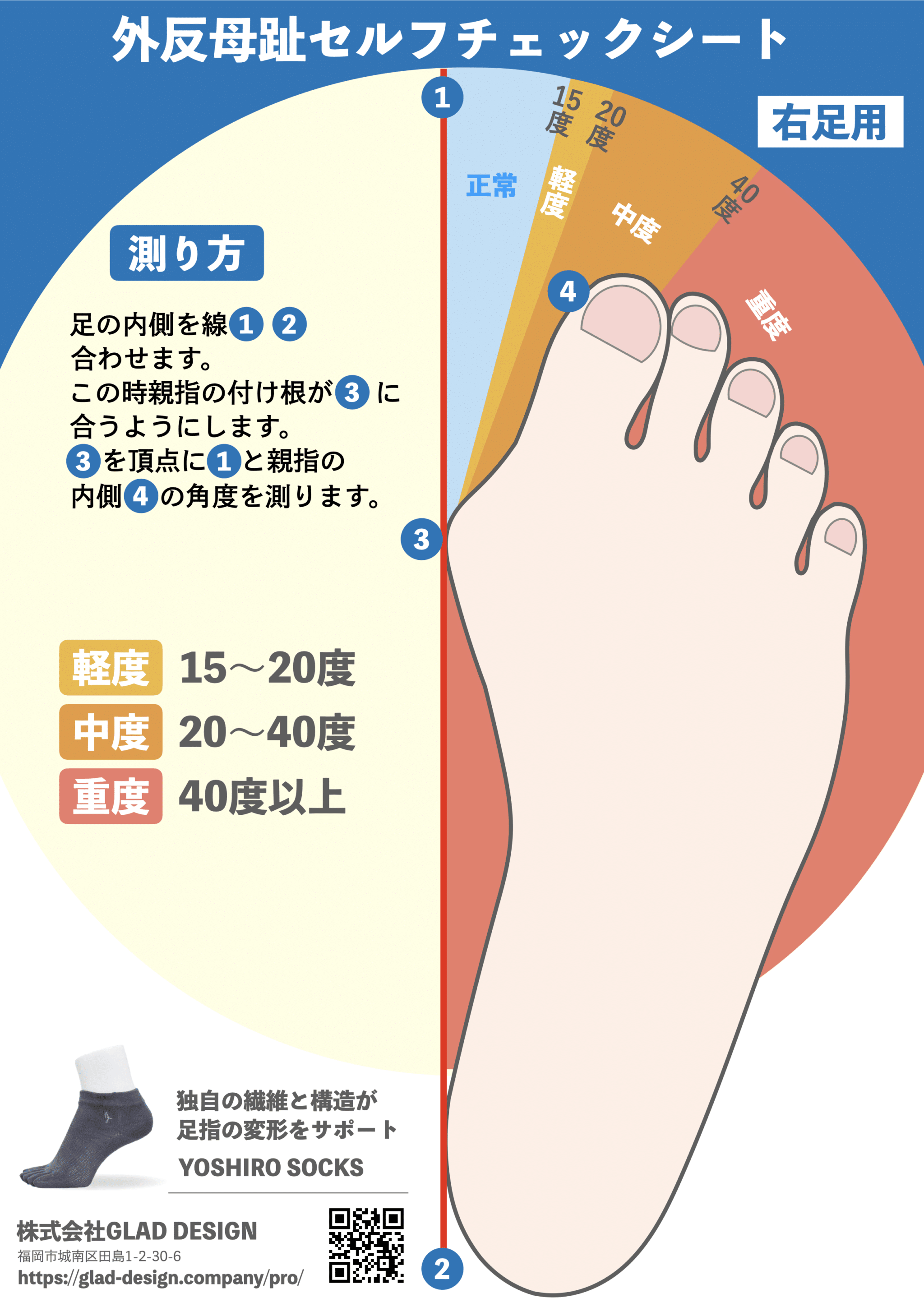
medical treatment
Myofascial low back pain is generally treated by the following methods. The following treatments (conservative therapies) may provide temporary relief of symptoms, but they do not cure myofascial back pain.
1) Rest: Temporary limitation of activity is necessary to reduce pain and inflammation.
2) Ice or warm compresses: Apply ice or warm compresses to the affected area continuously for several days to reduce inflammation.
3) Stretching: Stretching is performed to relieve muscle stiffness and tension that cause myofascial back pain.
4) Use of analgesics: Use appropriate analgesics as directed by the physician to relieve pain and inflammation.
5) Massage and chiropractic therapy: can provide temporary relief from myofascial back pain.
6) Behavioral therapy: It is important to review lifestyle and receive exercise guidance to prevent postural deterioration.
basicallyTo cure the root cause, toe care should be provided and posture should be improved.It is important to avoid excessive compression and lengthening forces on the back muscles with
self-care
Hironoba Exercise, a toe stretching exercise to improve myofascial back pain
Try doing this once a day for 5 minutes; if you do not see any change in your symptoms after 2-3 days, we recommend increasing the number of times to 2-3 times a day. The goal is to be able to do the toe par for 30 seconds.
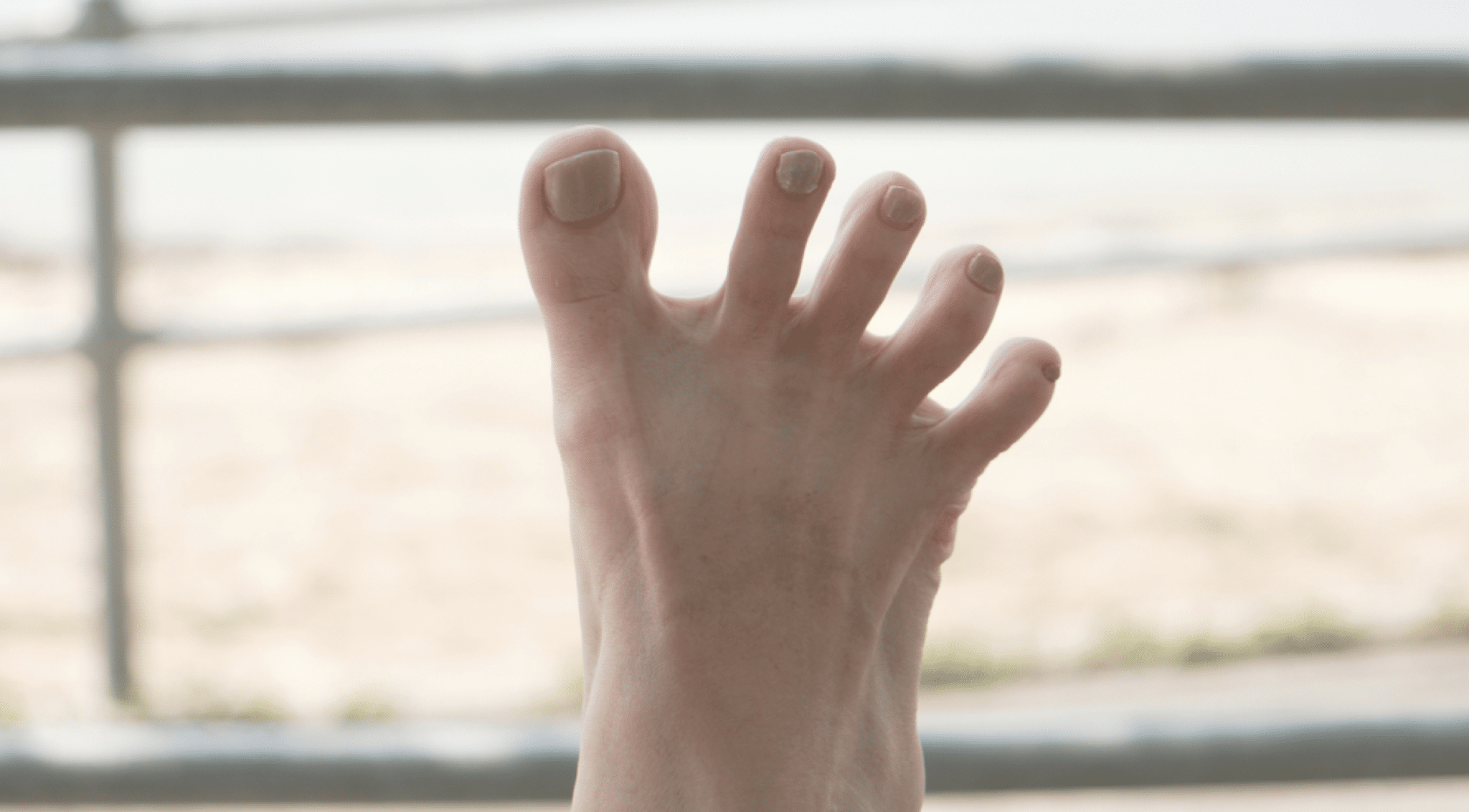
Corrective 5-finger socks for optimal posture support
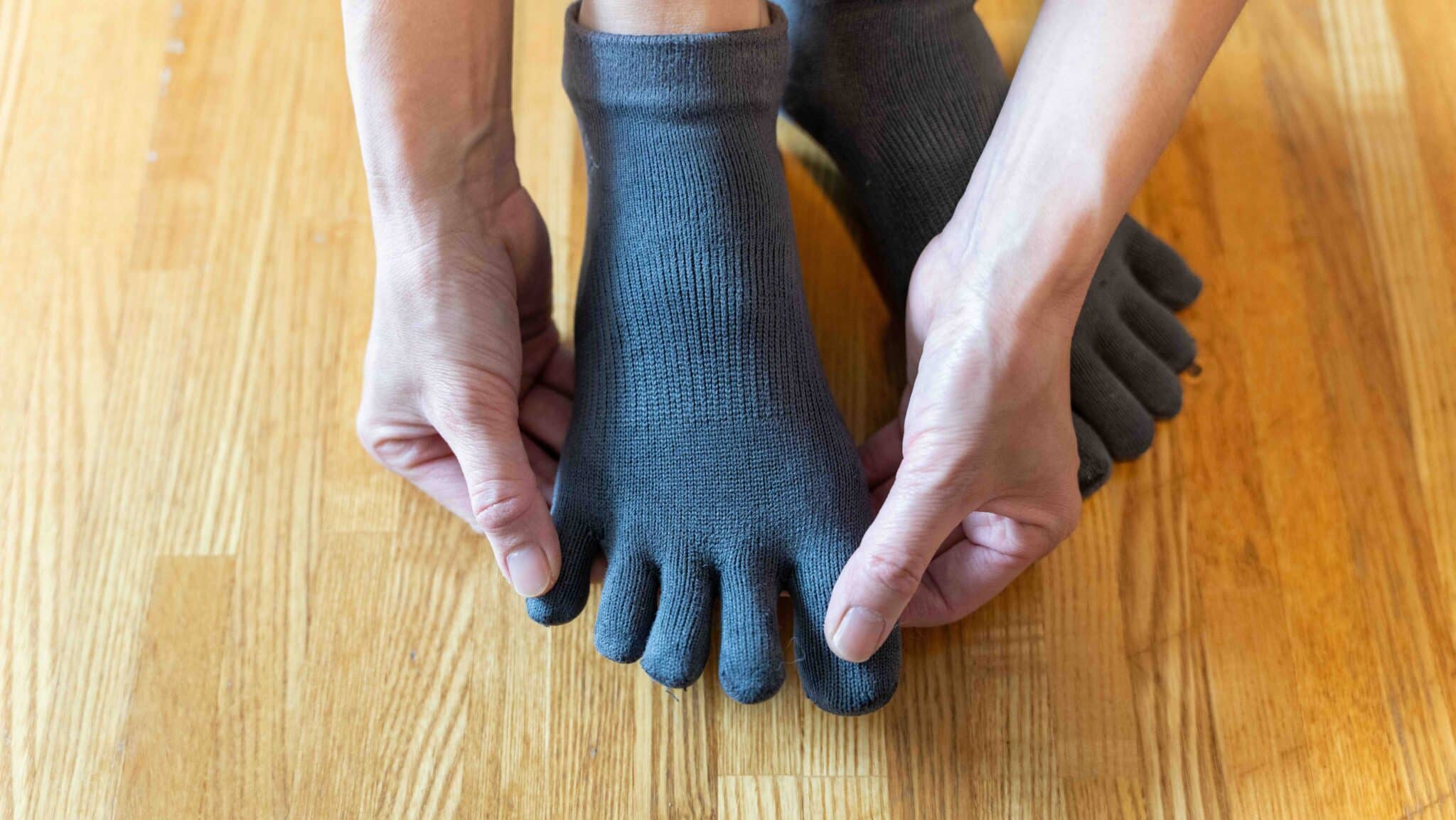
We have produced functional 5-finger socks made of cotton and silk and tried them on many patients in clinical settings, but we could not solve the problem of feet slipping in shoes and socks. Therefore, we spent two years working with a textile company to perfect the ideal fiber, and the corrective 5-toed socks "YOSHIRO SOCKS" were born. If you suffer from myofascial back pain, give them a try.
Pure cotton and silk materials are slippery
There is a silken finish (or mercerization process). Silkette treatment is a process that gives silk-like luster to yarns, and involves soaking yarns in a caustic soda (sodium hydroxide) solution and stretching them like hand-pulled udon noodles to straighten the cross section of the yarns. It is overwhelmingly used mainly for cotton and silk fibers (cotton).
The cross-section of the cotton is aligned, coloration is improved, and fluff is suppressed when processed, giving it a luxurious appearance. It is smooth and slippery to wear, but as the words "smooth" and "slippery" suggest, it is easy for the feet to slip inside shoes and socks. In other words, it is a material that can easily cause deformation of the toes.
Of course, there are cotton and silk materials that are not silken, so choosing such materials is also an important factor in preventing knee pain.
Five-toed socks allow toes to function.
Common socks are also called tube socks, and most people around the world have this type of socks. It is a shape that has been used for many years, but the tube type makes it difficult to use the toes properly. For this reason, socks with five separate toes are better, but there are many different types of this type.
The most important thing is to make sure it fits your own feet just right.The socks should be worn with a soft, comfortable, and comfortable footwear. If the fingertips or instep area is loose, even a good 5-finger sock will "slip". On the other hand, 5-finger socks that fit too tightly and feel oppressive are not recommended, as they can impede blood circulation. It is important to find 5-toed socks that feel "comfortable" when you try them on.
Also,Supporting the arch is important, but arch structure is a property that can lose its function if it is lifted too stronglySo, be sure to choose an arch that is also not too oppressive.
How to choose the right shoes
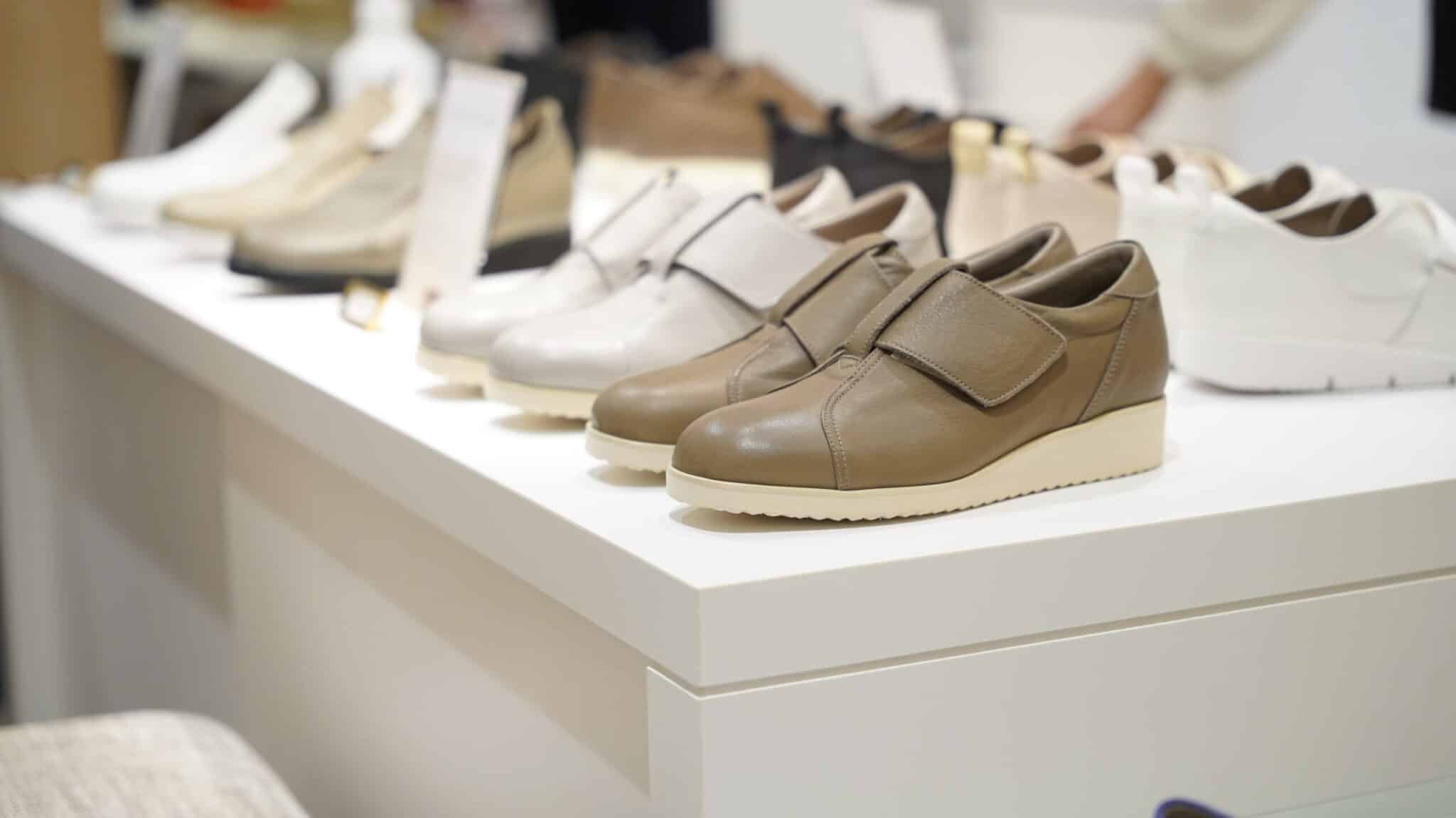
The most common cause of toe deformity is the choice of shoes and how they are worn.Most spine problems are caused by not using the toes properly. Few people think of the feet and the person because they are located so far away from each other. If you are suffering from myofascial back pain, please take this opportunity to review your feet.
Moderate walking relieves myofascial back pain.
To make it more effective
By making small changes in daily life, such as toe stretching and wearing corrective five-toed socks (YOSHIRO SOCKS), you can maintain correct posture and improve inflammation of myofascial back pain. Correct posture is created by correct muscles.Correct muscles can only be built by walking with "toes spread and extended"!The following is a list of the most common problems with the
Walk with a small gait.
・Use your toes, such as going up hills and stairs.
. Avoid wearing footwear indoors.
Try to walk at least 6,000 steps a day.
Make sure the laces are tight.
...No ordered pillows or mats.
Choose the right shoes.
Use a shoehorn to put on your shoes.
Stretching the toes and walking with corrective five-toed socks (YOSHIRO SOCKS) helps to use the toes functionally.(1) Toe deformity improved → (3) Center of gravity improved → (4) X-legs and O-legs improved → (5) Leg length difference improved → (6) Pelvic distortion improved → (7) Spine straightened → (8) Muscle stiffness improved → (9) Blood flow improved → (9) Muscle inflammation improved → (10) Myofascial back painis the process of improvement.
story of one's experience
Mr. H began to have back pain around the age of 70, and was diagnosed by an orthopedic surgeon as having "myofascial back pain due to aging," and was told that there was "no cure for it. Because of her bad back, she began to use a cane and gradually became unable to go out for long distances, and was unable to walk more than 5 minutes at most.
He said his wife introduced me to him when he was spending his days in such a physical condition. Bending over her aching back and clinging to a cane, she said to me, "I want to go to my son's place in Kanagawa. Will I be able to go? I was so happy to hear that he was able to go to Kanagawa.
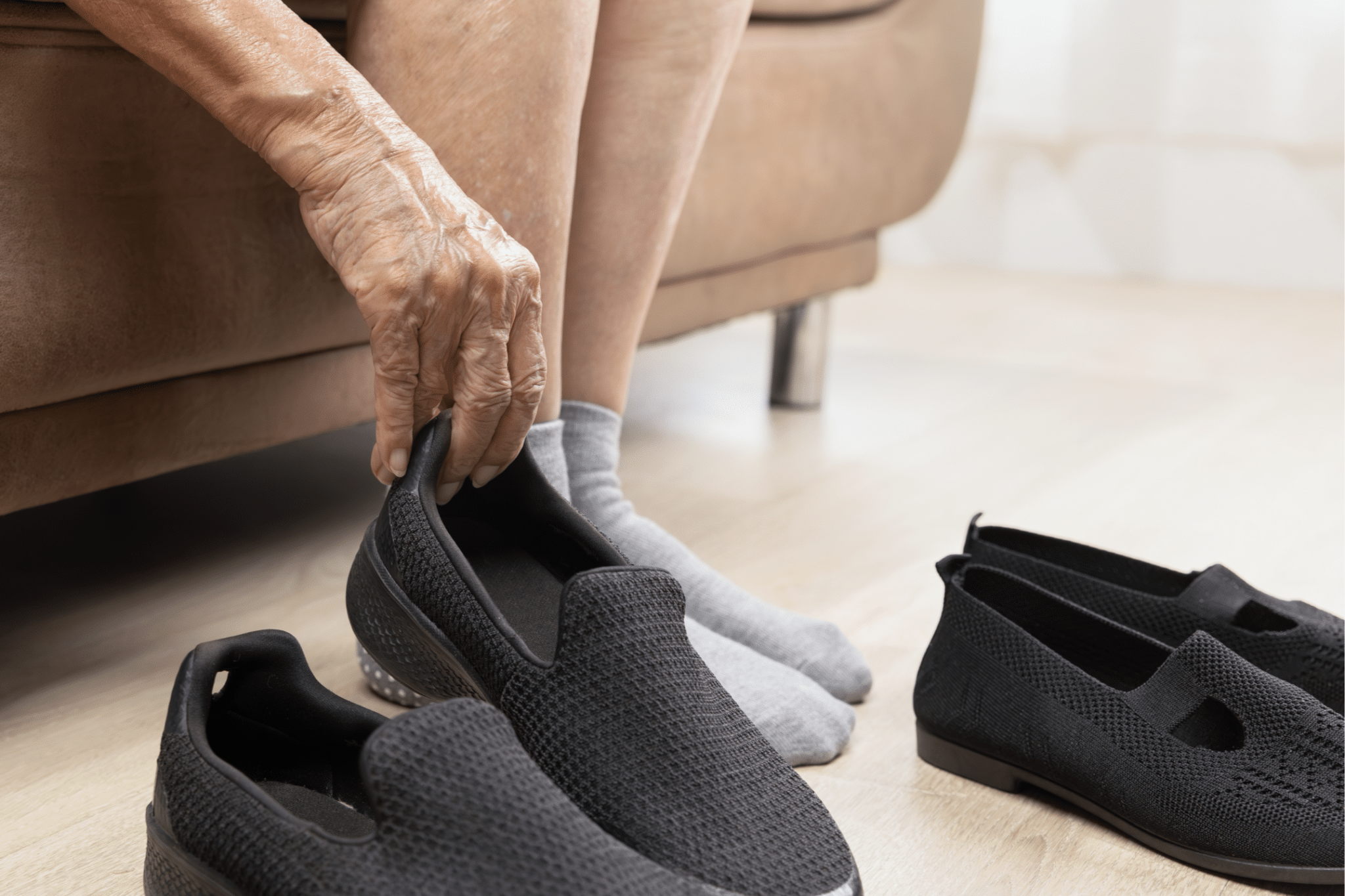
I said, "It's okay," and looked at his feet. I found that most of my toes were floating and not touching the ground. It was a "floating toe. I looked at the shoes he was wearing, which were "slip-on" type shoes that can be easily put on and taken off. These shoes are popular among middle-aged and older people because they are easy to put on and take off, but the feet slip easily in the shoes, and the toes are easily deformed.
I told him about the importance of proper standing and walking, and the importance of stretching his toes. I also instructed them on the HIRONOBA exercise and recommended YOSHIRO SOCKS for them to work on every day.
Mr. H went back to his home and just kept at it. In particular, she did the hiro-no-va exercises three times a day, five minutes each leg, starting when she woke up in the morning. At first, it was hard for her to even put her fingers between her toes. Her toes were so stiff that her hands hurt more, and she could hardly bend them back.
Nevertheless, as I continued to persevere each day, I was able to do it successfully. And as I continued to practice walking with my small toes, I realized that my toes were on the ground, and the distance I could walk increased.
It was only about two and a half months later. I was able to travel alone from Fukuoka to Kanagawa, where my son lives. He took me to Hakone and I was able to see the pictures. I saw the family in the picture with very happy expressions on their faces.
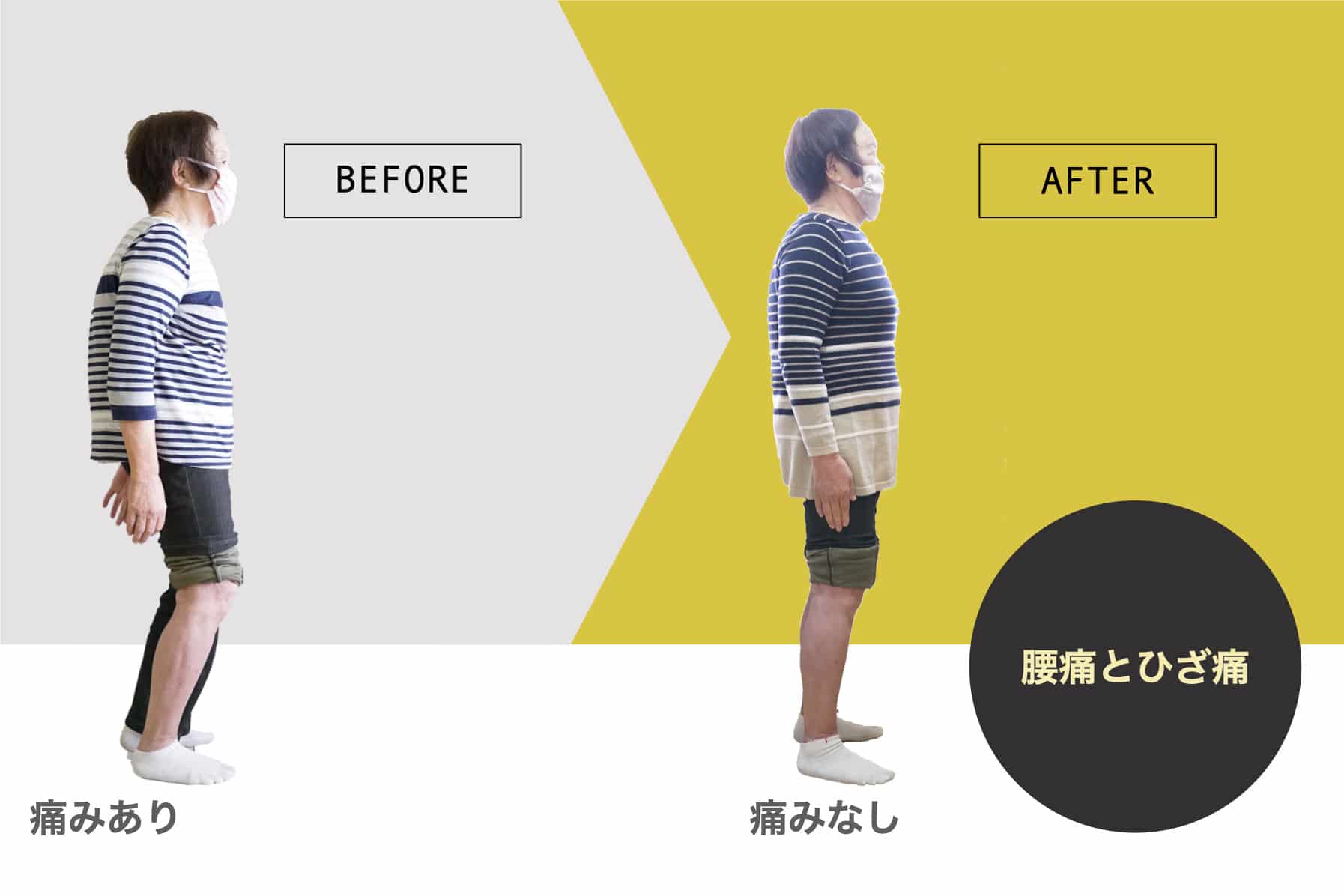
The fact that she was able to visit her son alone gave her confidence, and half a month later, she no longer uses a cane. Now, his floating toe is much better. I think the important thing is to have the desire to heal yourself.
Just recently, my cousin invited me on a bus trip to Sanin. Since I write haiku, it is nice to be able to walk and experience the scenery.
References
Functional Anatomy and Physical Therapy of Hallux Valgus. Yuasa, Keiro. Physical Therapy Vol.31 No.2 2014.2 P159-165
2. "Shift Your Toes and You'll Be Healthy" by Keiro Yuasa/author, PHP Kenkyujo, 2014.6
3. "Your back and hips will never get bent again in your life by grabbing your toes in just 5 minutes! Written by Keiro Yuasa, PHP Research Institute, 2021.6
